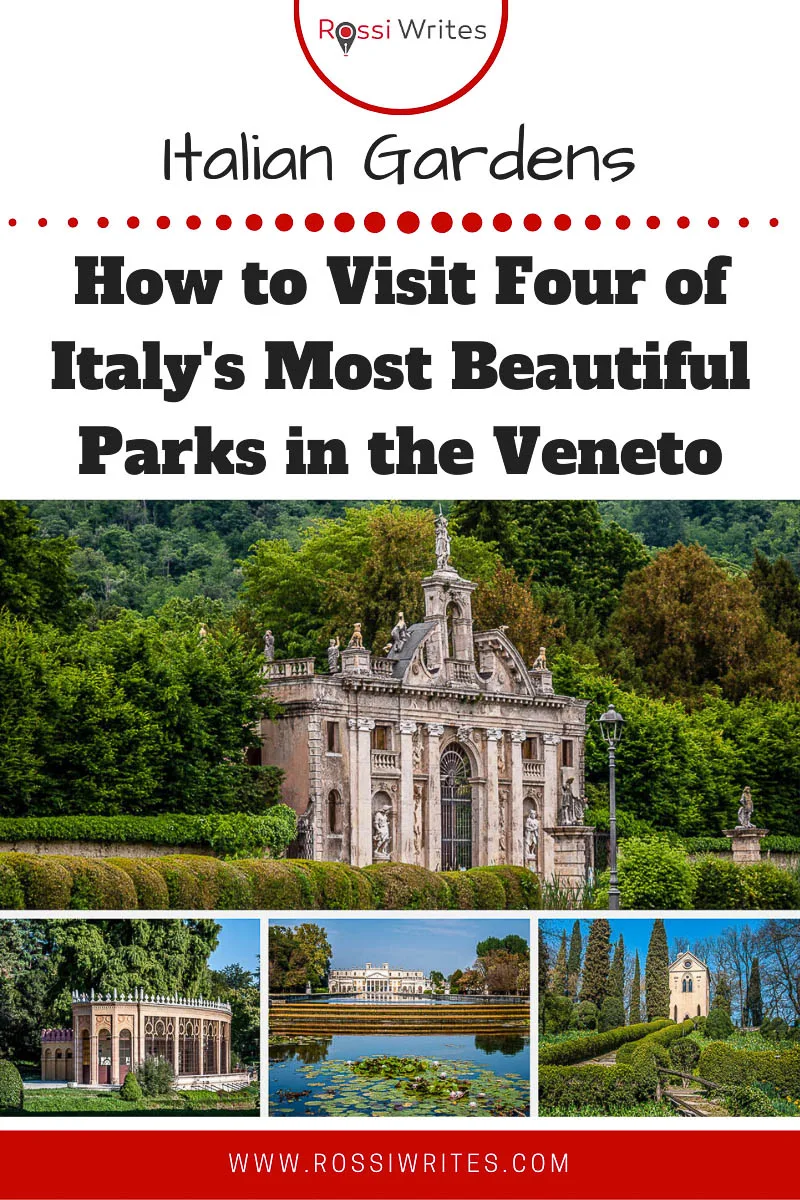Italian gardens are famous all over the world.
Meticulously designed and carefully maintained, they have been setting landscaping standards for centuries.
With roots that stretch to Ancient Rome where patrician houses and villas had private gardens to retreat to for relaxation from the bustle and hustle of urban life, the Giardino all’Italiana truly flourished during the Renaissance. This is when large gardens and parks with cascading waters, whimsical statues, trimmed trees and hedges, as well as quirky grottoes and other such ingenious whims were created in the Renaissance city-states on the Apennines.
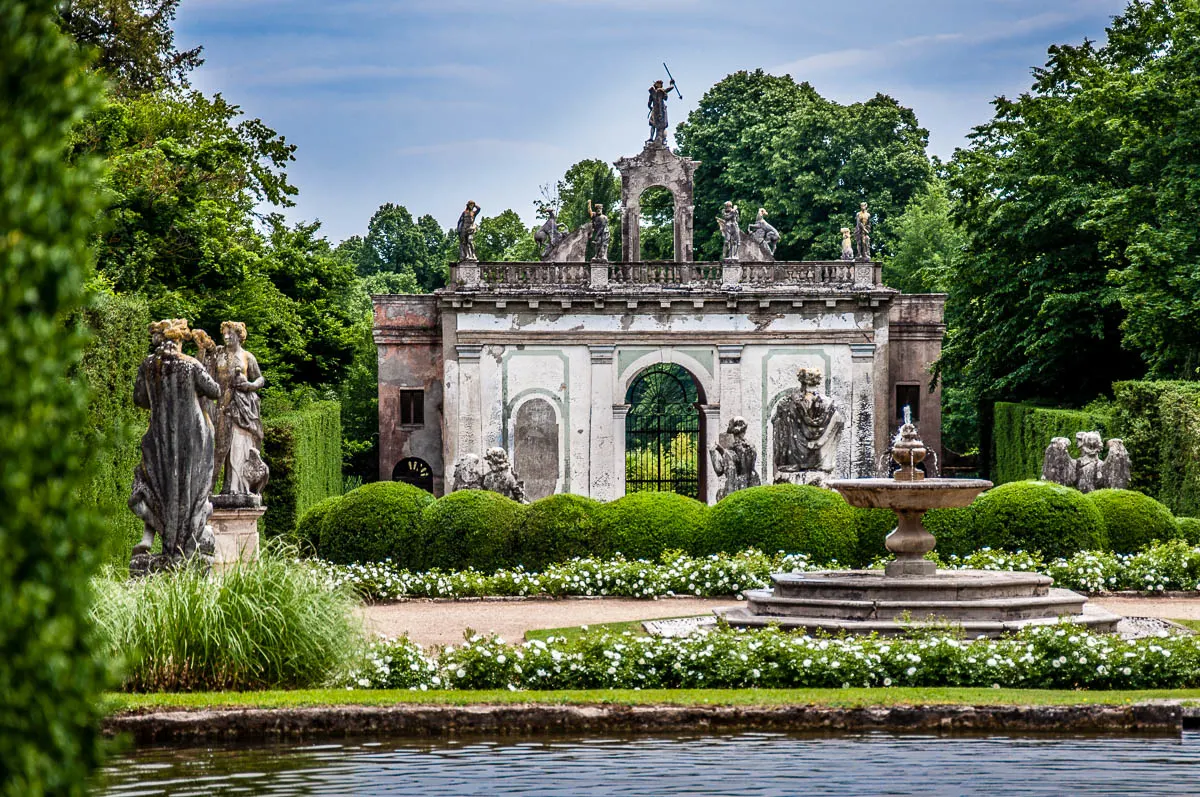
In landscaping nature, order and symmetry were always the final goals in Italy. Beauty that was pleasing to the eye was achieved by following strict geometrical lines. Secret gardens, herb patches, and boxwood labyrinths were then secluded in the different corners of the large parks.
The Italian gardens attracted admiration all over Europe and through the centuries they deeply influenced and guided the development of the gardening art in France and England.
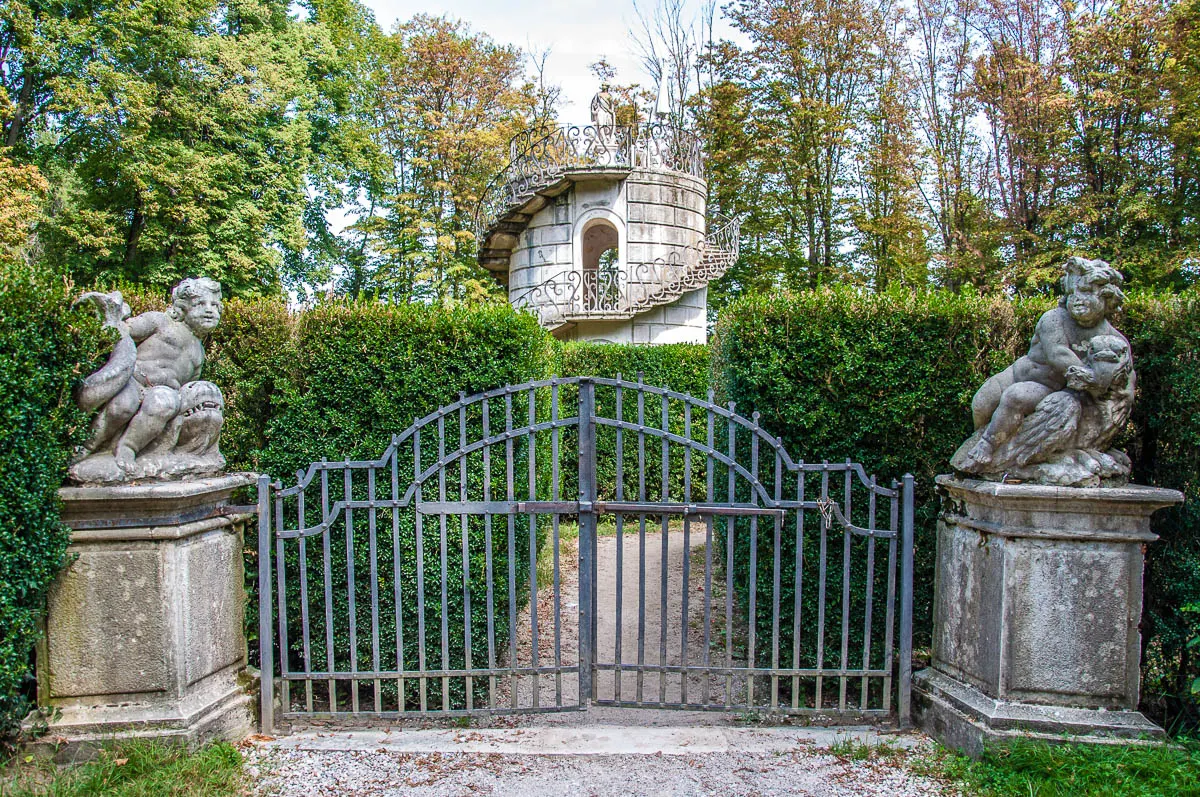
To this day, parks and gardens abound all over Italy. There are over a thousand of them in all of the country’s twenty regions.
Varying in size from mammoth productions with stunning water features and long tree-lined avenues to small intimate gardens where bunnies run free and turtles swim in ancient fountains, the Italian gardens are an integral part of Italy’s beauty and many of them are an unmissable sight during a visit to Italy.

A special contest called Il Parco Piu’ Bello d’Italia (Italy’s Most Beautiful Park) has been taking place here every year since 2003.
The recognition of Il Parco Piu’ Bello d’Italia is given yearly to two parks – one public and one private. The contest aims to promote the environmental and botanical heritage of parks in Italy and the selection process is based, among other things, on the parks’ preservation conditions, management, accessibility, and services.
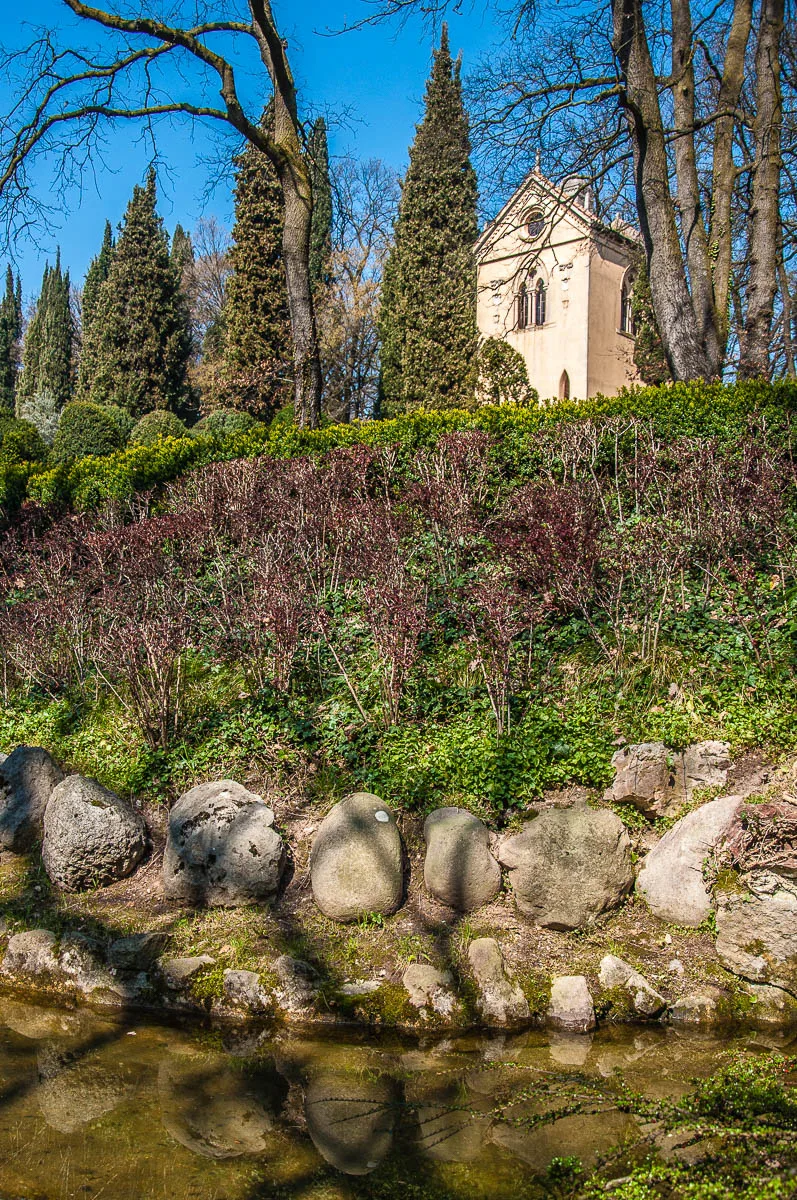
Since 2003, the inaugural year of the contest, the Northern Italian region of the Veneto has won the award four times. This is a great recognition of the beauty of the parks and gardens of the Veneto where landscaping has centuries-old traditions.
So, in this blog post, I want to introduce you to Veneto’s four officially recognised most beautiful parks in Italy. By summarising their stories, by outlining what makes them must-see places, and by sharing many photos of their beauty, I hope to give you some great ideas for your exploration of this corner of Italy.

I have also included many practical tips and suggestions to make your visit to these beautiful parks an easy feat and a very pleasant way to spend your time in the Veneto.
Let’s start!
Italian Gardens – How to Visit Four of Italy’s Most Beautiful Parks in the Veneto
1. Giardino Storico di Valsanzibio, Galzignano Terme, Province of Padua
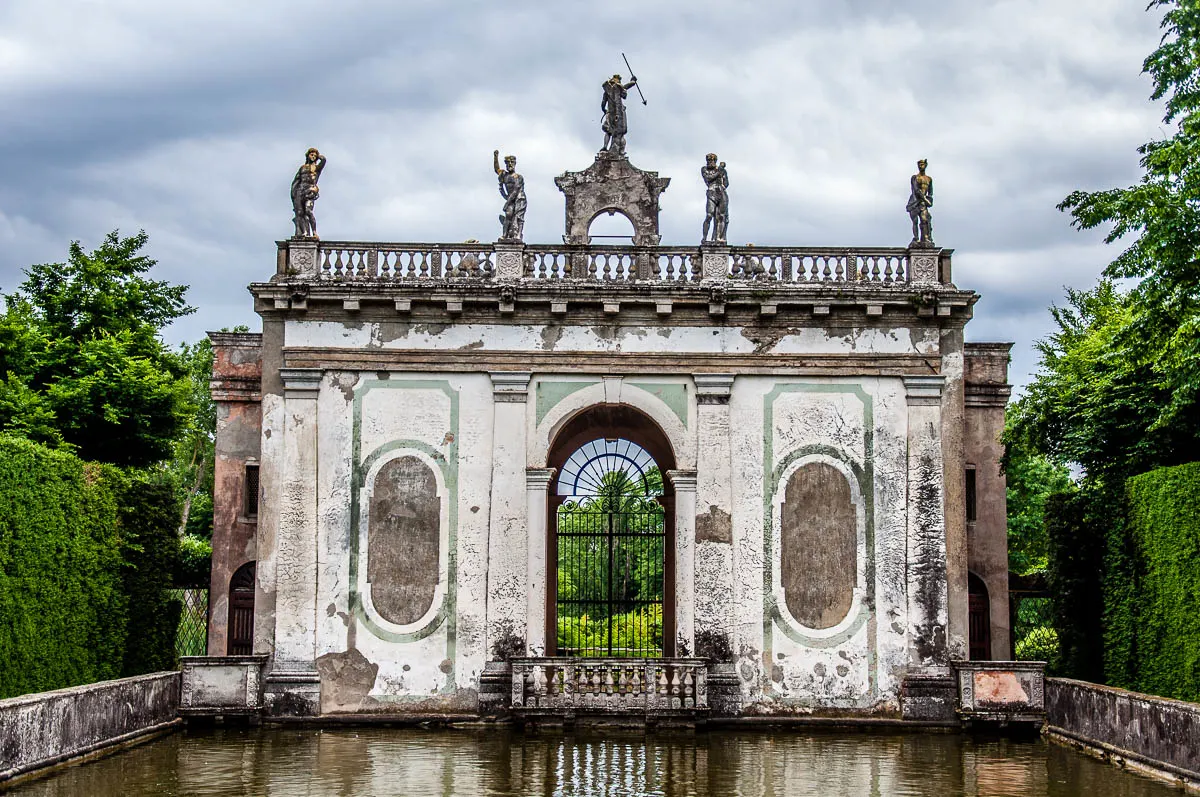
The first-ever award for Italy’s Most Beautiful Park was given to a stunningly gorgeous garden in the Veneto. This happened in the year 2003 and the winner was the monumental historical Giardino di Valsanzibio.
Designed to take you on a spiritual journey through tree-lined avenues and past fish ponds, statues, and trick fountains, the Valsanzibio Garden is a symbol of man’s constant strive for perfection and his journey through space and time from ignorance and physical limitations to a spiritual revelation.
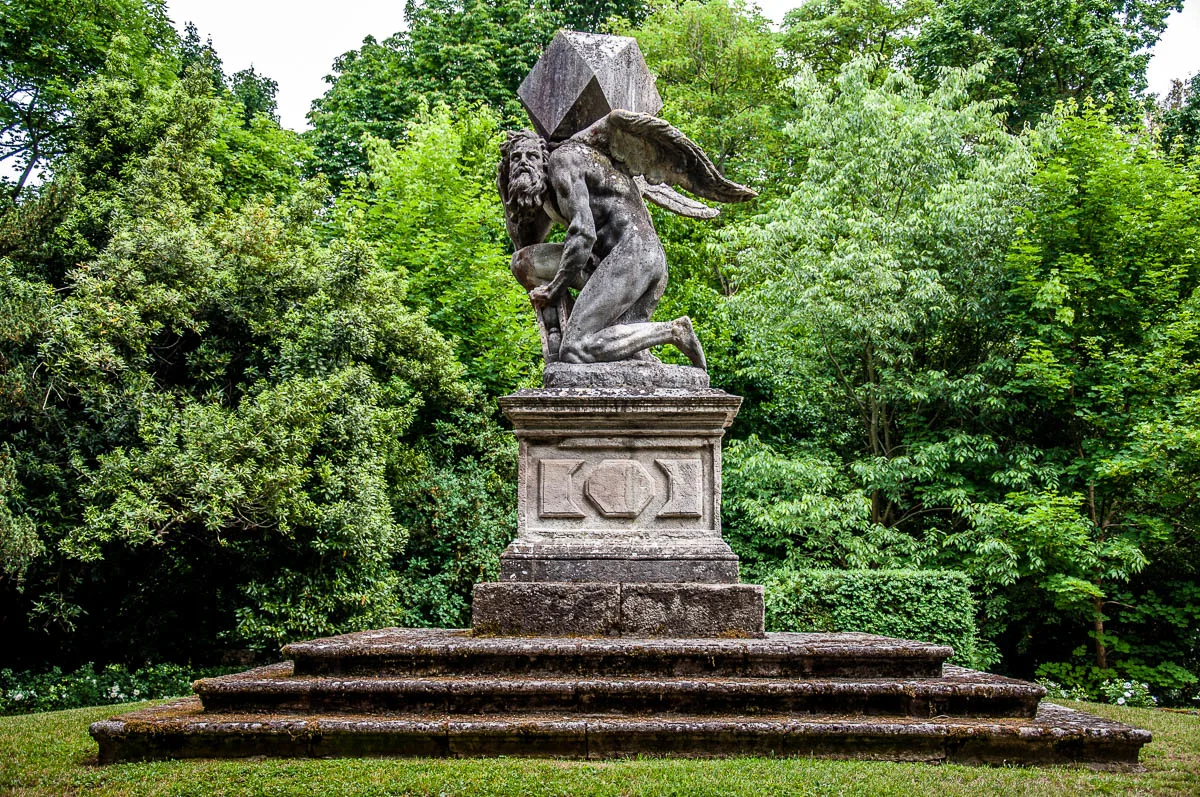
You will find the Giardino Valsanzibio at the foothill of the lush Euganean Hills in the Province of Padua in the Veneto. It was built by the Barbarigo, a powerful Venetian family, in the second half of the 17th century to fulfill a vow of thanks given to God for safeguarding them from a devastating bout of the plague.
Over 350 years old, adorned with over 60 statues, and preserving more than 70% of its original vegetation planted in the 17th century, the Giardino Valsanzibio has a myriad of wonderful and whimsical features the most important of which are:
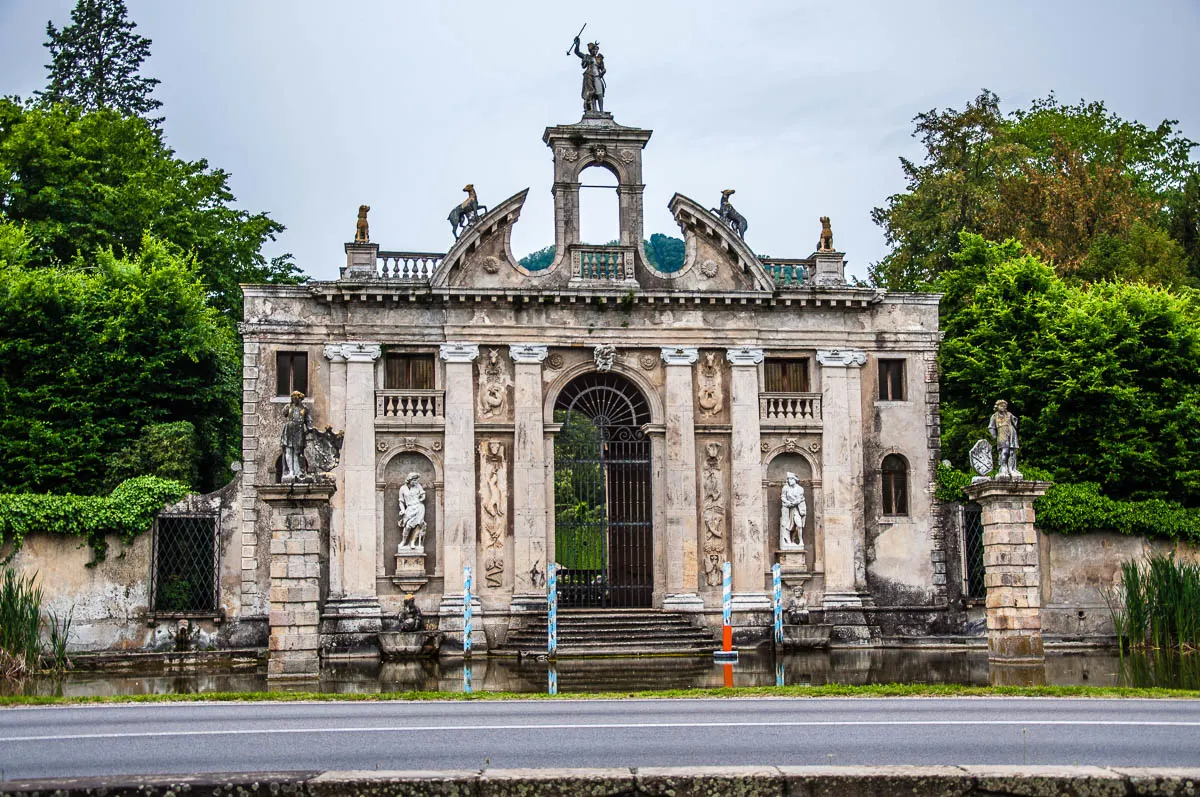
- Diana’s Doorway and the Paludo – a monumental gate dedicated to the Roman goddess of hunting and the Moon. The small pond in front of it is what remains of a long canal on which the Venetian noblemen would cross in their boats the Valley of St. Eusebio on their way to the Giardino Valsanzibio.

- Boxwood Maze – over a mile long and made of boxwood plants that are almost 400 years old, the maze symbolises men’s wanderings through life seeking to achieve salvation and encountering a capital sin every time he reaches a dead end in the labyrinth.
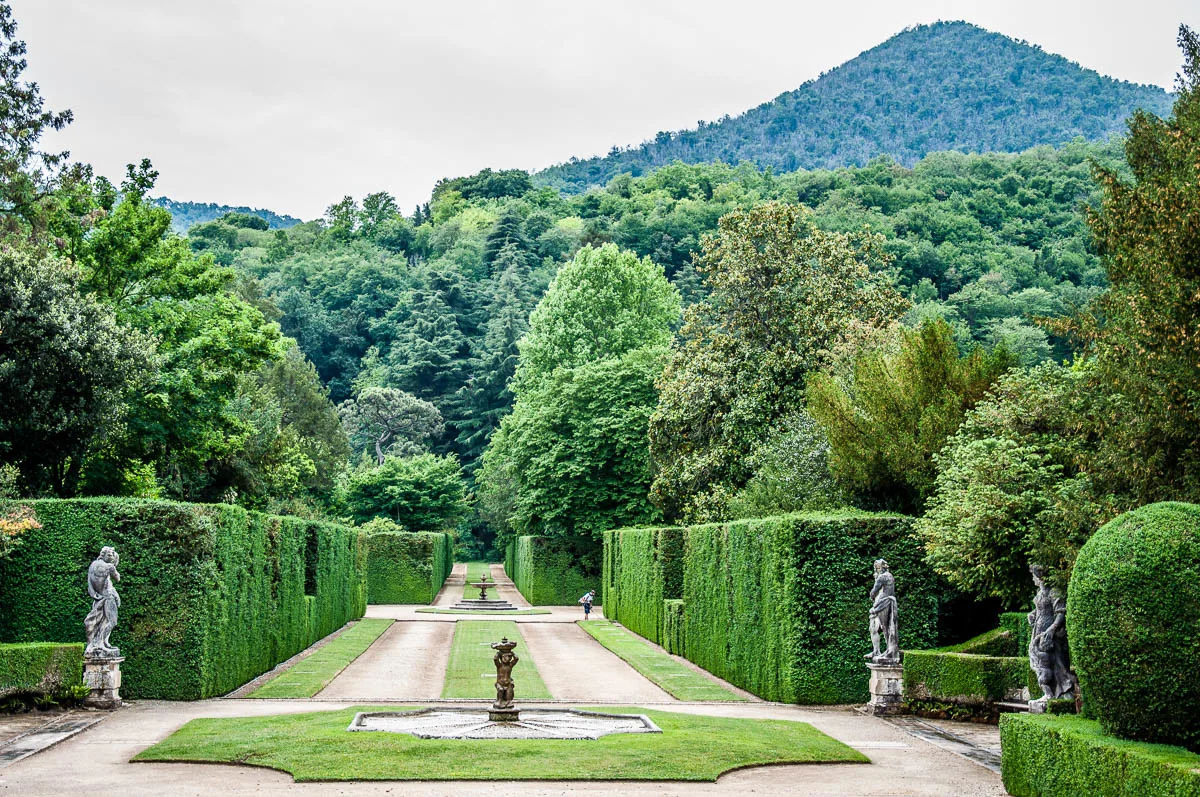
- The Main Boulevards – the main alleys in the Valsanzibio Garden are called Cardus and Decumanus in line with the names used in the past for the main roads in the Ancient Roman towns. Interestingly, the Decumanus is a water alley with three large fishponds in quick succession.
- Botanical Garden – a gorgeous green expanse surrounded by a variety of trees and shrubs.
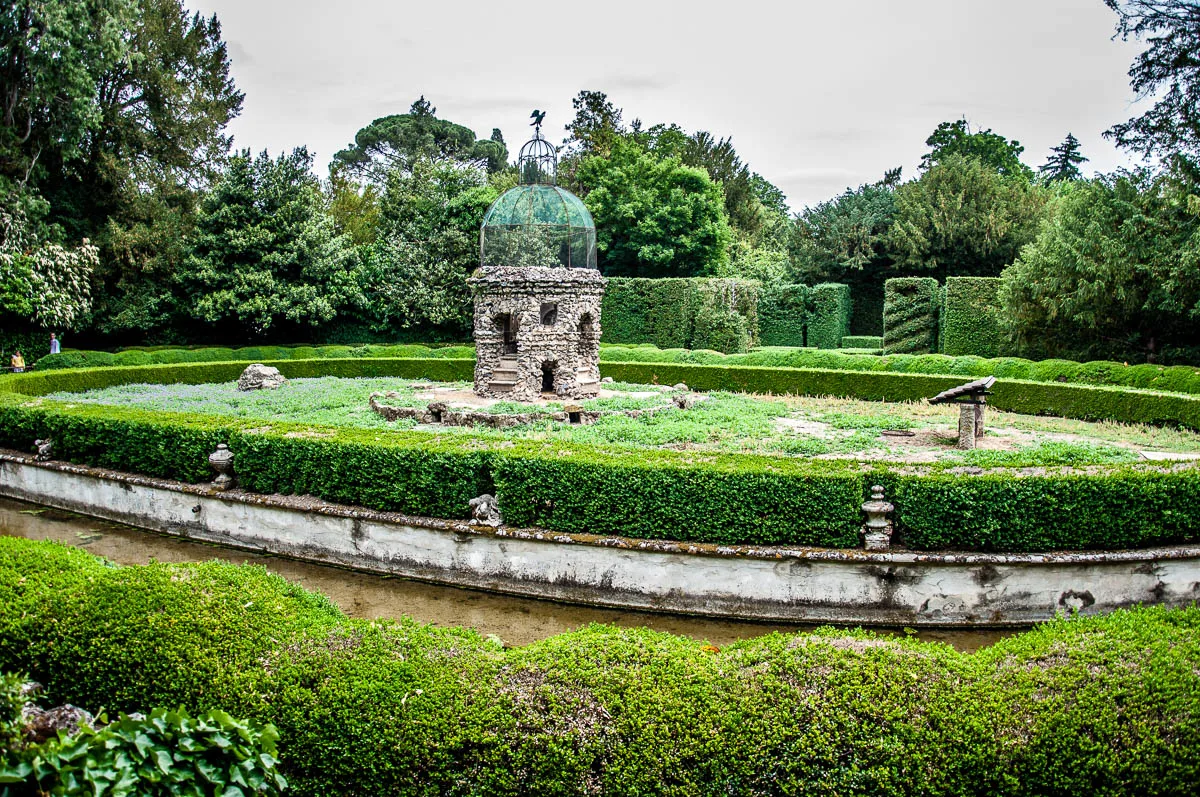
- Rabbits’ Island – this is an oval island surrounded by an oval moat. Populated by rabbits of different breeds and with a large cage in the middle where a few budgies live, this is a place straight out of a whimsical fairytale. While rabbits’ islands were a popular addition to Italian gardens in the past, nowadays very few of them remain. As everything in the Valsanzibio Garden, the Rabbits’ Island here is infused with a symbolic meaning. It stands for the limitations that the body has in the continuum of time and space.
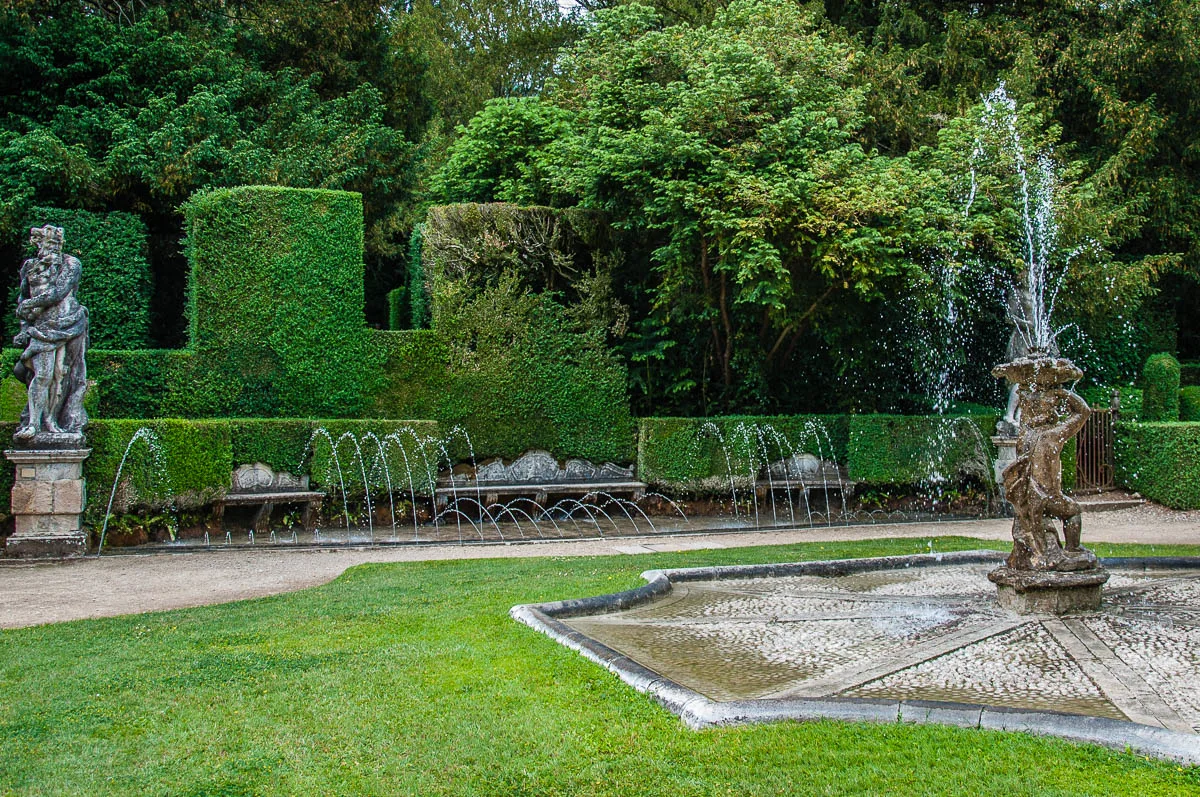
- Fishponds and Fountains – water plays a centre stage role in the Valsanzibio Garden and adds to the fairytale feel of the place. A couple of black and a couple of white swans together with a few geese and ducks call the garden’s large ponds home. Huge fish swim in the water and if a mosquito gets too close to its mirror-like surface, you may glimpse the glistening body of a large fish jumping in the air to catch the hapless insect before splashing back into the water. The trick fountains are particularly fun. They start spraying as soon as you head for a set of nice stone benches to relax after exploring the garden for hours on end.
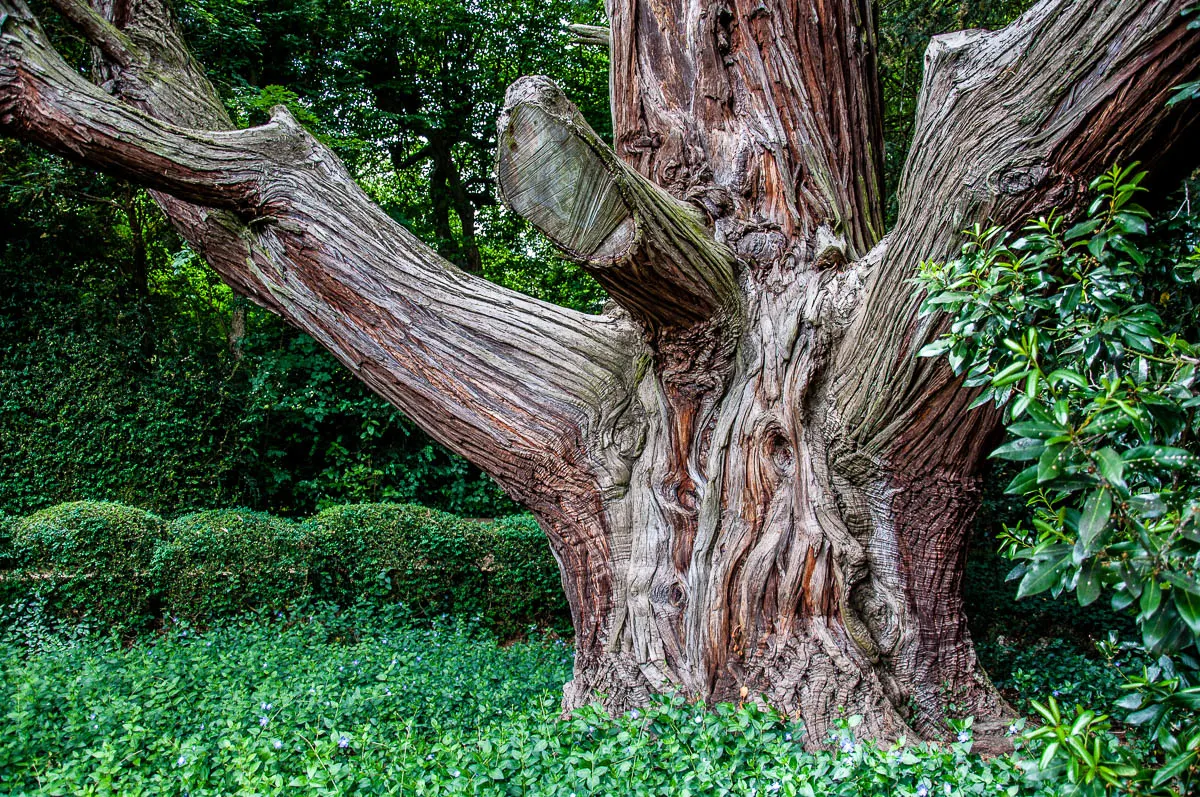
- Centuries-Old Trees – the Valsanzibio Garden is home to several unique and/or centuries-old trees. The oldest specimens in the park are several yew trees which are between 700 and 900 years old. A very interesting tree here is the gigantic Californian Cedar. It is the oldest specimen of its type in Europe. It was planted in the park in 1665 after a long and arduous sea journey from America to Europe.
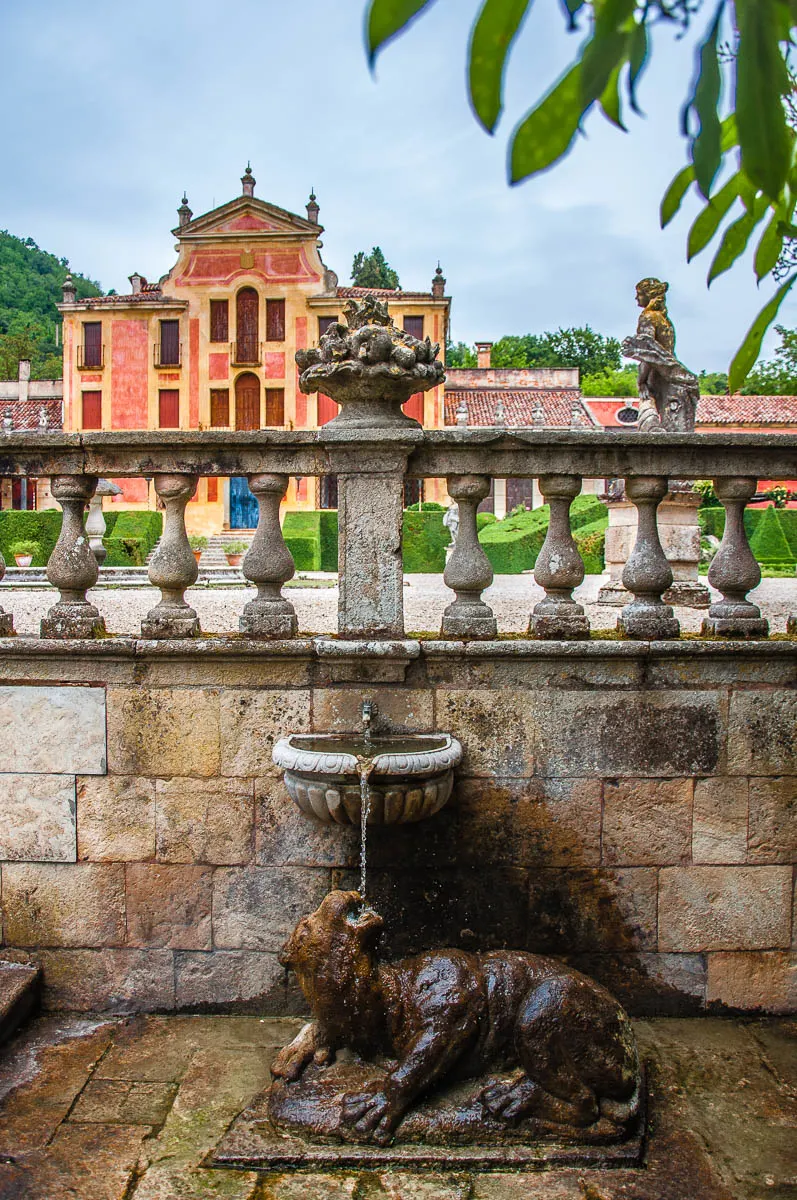
Please, be aware that the villa which is attached to the garden is not open for visits. You can admire its beautiful facade in the context of the park but you won’t have access to its private garden and interiors.
How to Reach the Park: The best way to reach the Valsanzibio Garden is by car. There is a spacious car park right next to the park’s entrance. Approximate driving times are as follows: Padua – 30 mins, Venice – 45 mins, Vicenza – 50 mins, and Verona – 1 h 20 mins. Click here to see the Valsanzibio Garden on Google Maps.
Official Website: Giardino Storico di Valsanzibio
Opening Months: from the last weekend of February to the second weekend of December. To avoid disappointment, please, contact the garden in advance to make sure that it will be open on the day of your visit.
My Favourite Corner: Definitely the Rabbits’ Island! Such a whimsical place. The water trick fountains are a lot of fun, too.
2. Park of Villa Nazionale Pisani, Stra’, Province of Padua
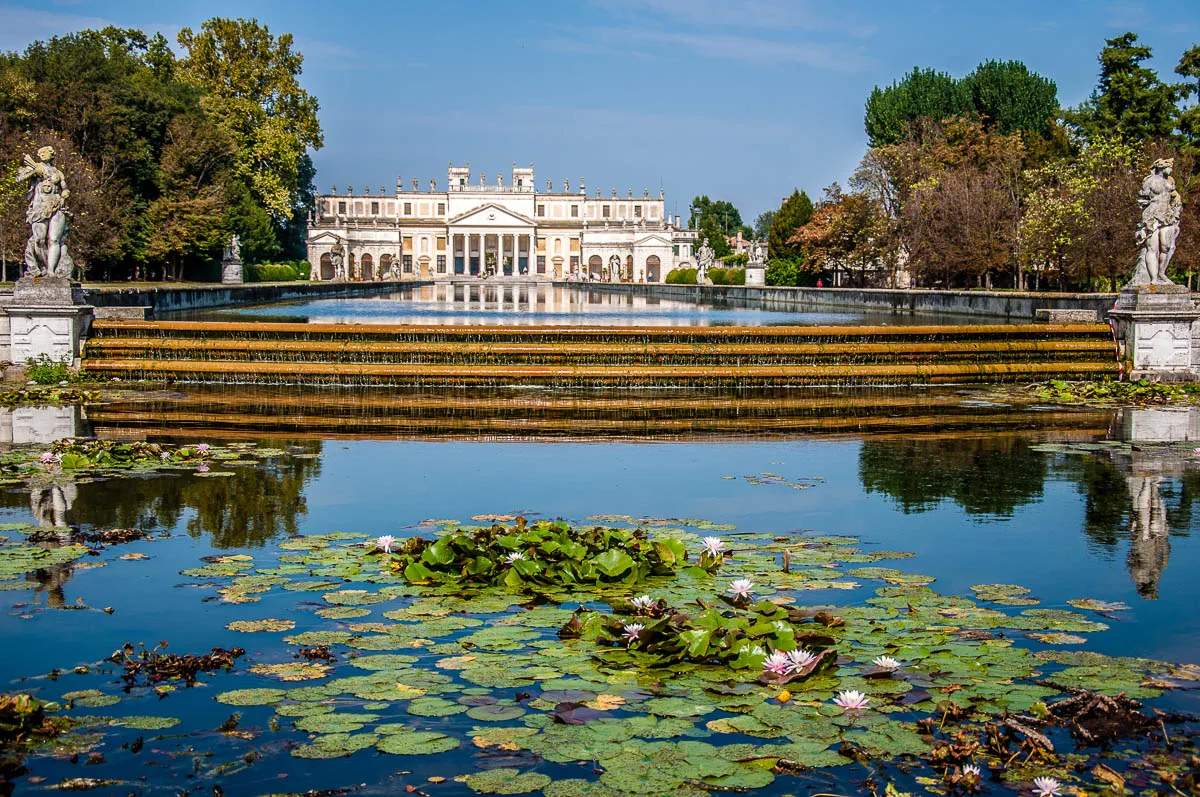
In 2008 another park in the Veneto was officially proclaimed to be Italy’s most beautiful. Attached to the Queen of the Venetian Villas – Villa Pisani in the small town of Stra’ in the Province of Padua in the Veneto – the park is both gorgeous and enormous. You can easily spend a whole day there taking all in.
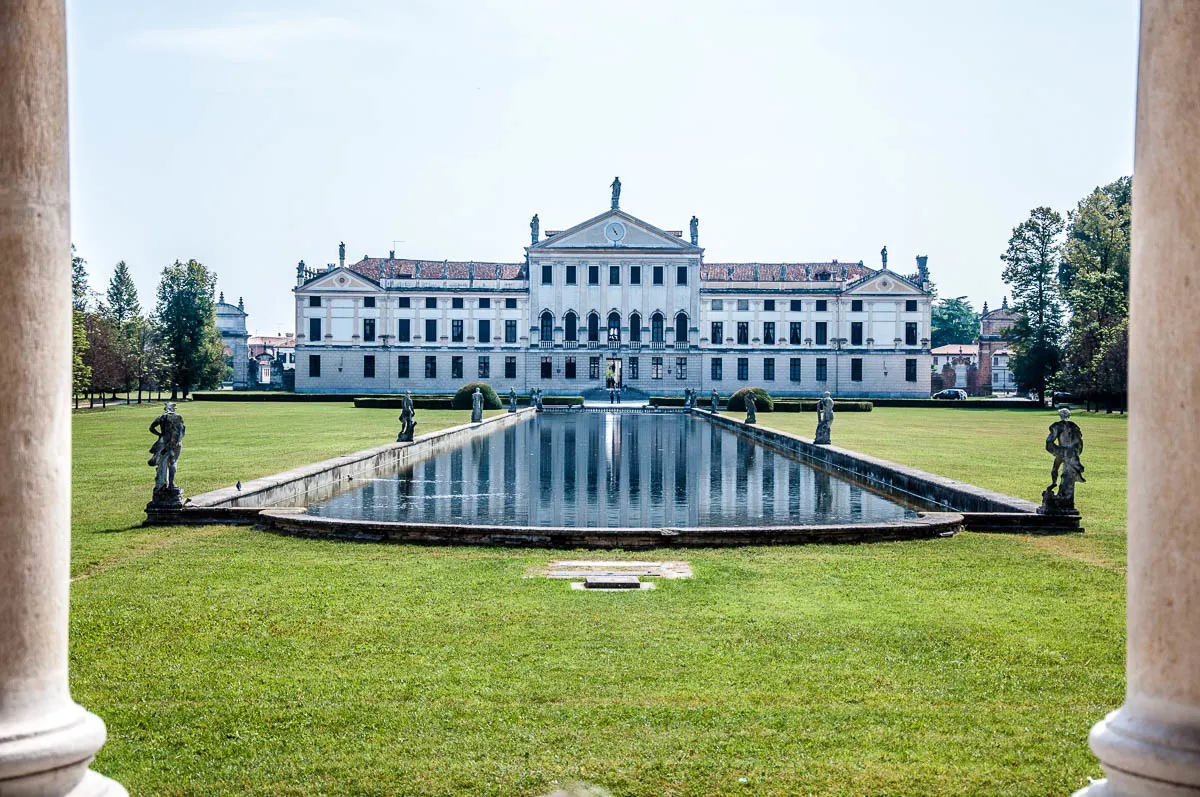
The park of Villa Pisani represents both the Italian and the English traditions in gardening and, in addition, it has been shaped with Venetian, French, and Austrian influences in mind. It was created in the first half of the 18th century and it has several large water features, a coffee house with an ice-house underneath, a maze, palatial stables, wisteria tunnels, greenhouses, and a number of different pavilions.
It is a great place to spend a hot afternoon pretending to be a member of the old Venetian aristocracy.

Some of the most important and beautiful things to see in the park of Villa Pisani are:
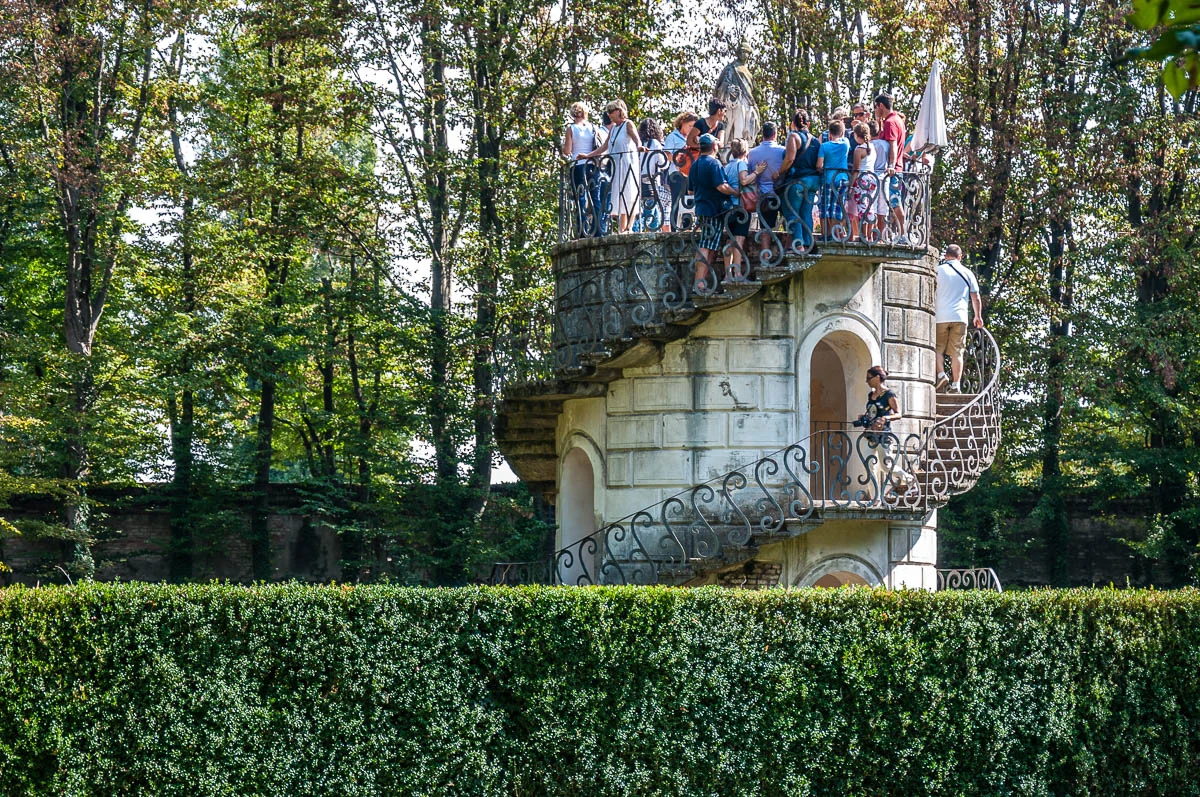
- Maze – called the ‘Labyrinth of Love’, the maze at Villa Pisani is one of the biggest in Europe. It was completed at one of the very first stages of the building of the villa. In its centre, there is a lovely little turret topped with a statue of Minerva. You need to find your way to the turret through nine circles of hedges. The maze has been restored many times and it still preserves its original design. Usually, there is an employee standing at the top of the turret, guiding you around if you get hopelessly lost. In the past, the noble ladies and gentlemen spending their summers at Villa Pisani, would play a game in the labyrinth. A masked lady would stand at the top of the turret waving to the cavalier trying to find his way to her. Once he reached her, she would reveal her identity. Be aware that the maze at Villa Pisani is closed from November until March. It may also be shut if the weather is bad or too hot.
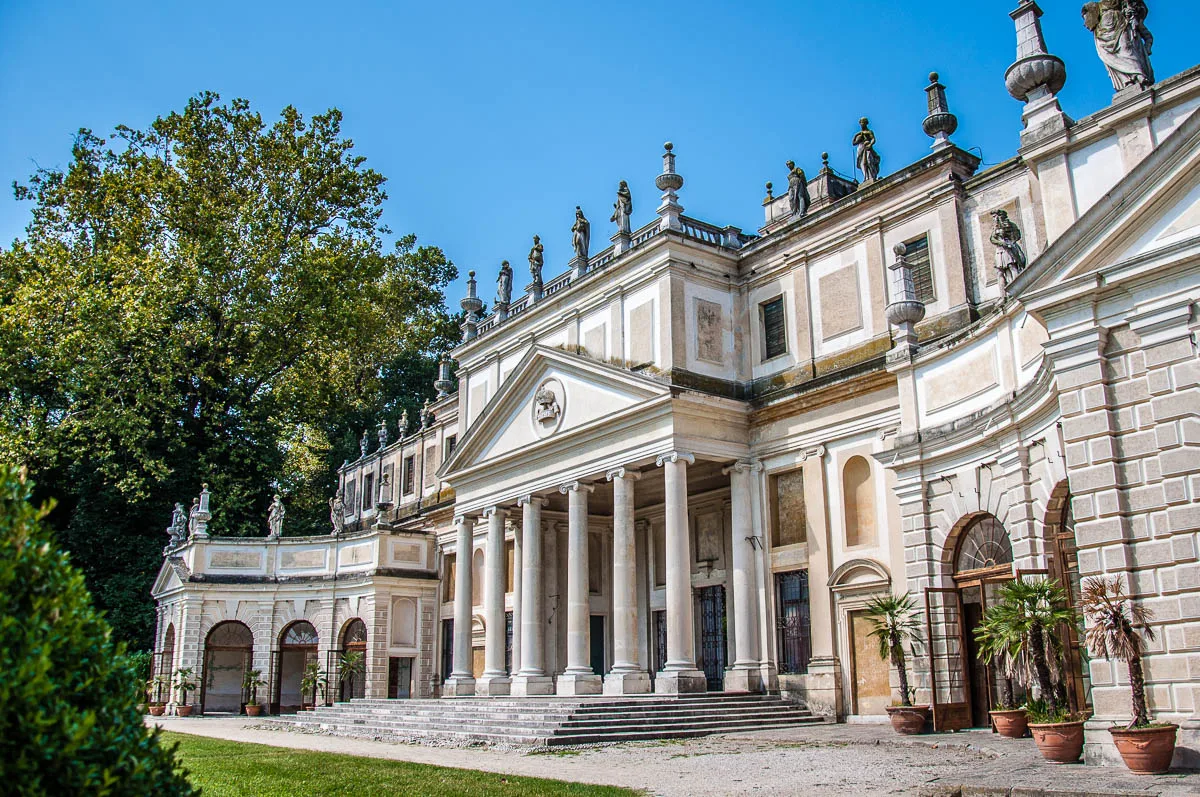
- Stables – again, this is one of the very first buildings to be erected in the garden of Villa Pisani. The stables look like a small palace. You will find them at the end of the long pool. Inside the side wings you can see some delicate, slightly faded frescoes.
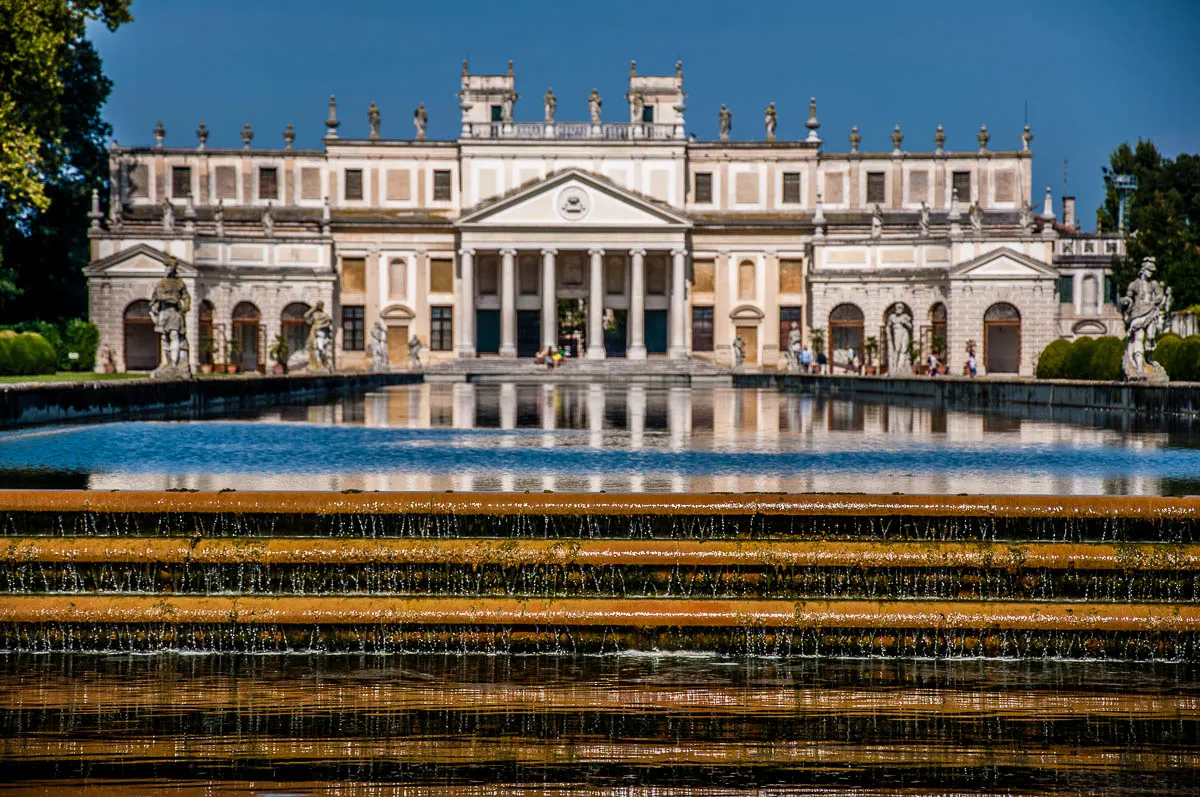
- Pool – this long body of water is a relatively recent but a very stunning addition to the landscape of Villa Pisani. The pool was built in 1911 for hydraulic studies by the Hydrographic Institute of the University of Padua. In 1913, the pool was rebuilt and statues, brought over from other Venetian villas, used to adorn it.
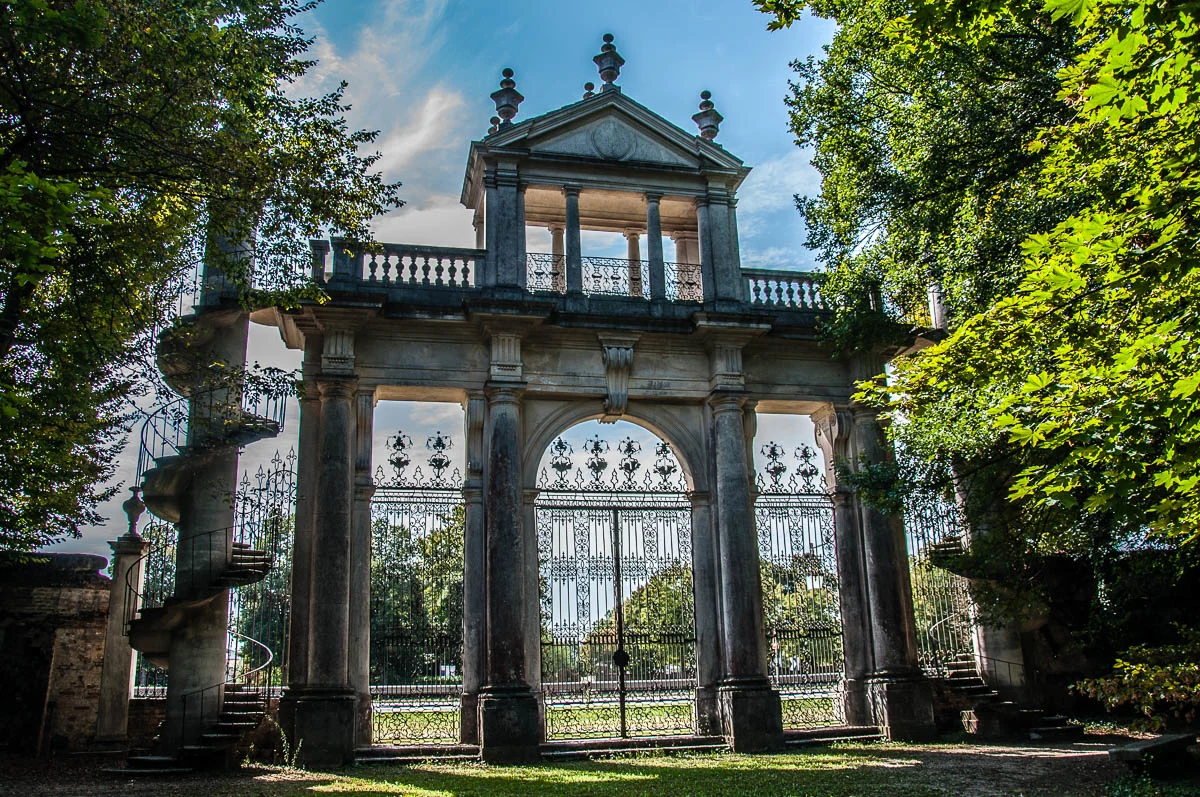
- Belvedere Terrace – a really beautiful structure used in the past for theatrical and musical performances. It was also a favourite place for the ladies to spend time in the sun lightening their hairs. In order to avoid getting a tan, they would use a wide-brimmed hat with a large hole cut in the middle. This way, their hair (covered with a mixture of salt and herbs) could be exposed to the sun, while their faces were still being kept in the shade. The Belvedere Terrace in Villa Pisani’s garden is my favourite bit there. It looks straight out of a fairytale. You will find it in the English arboretum.
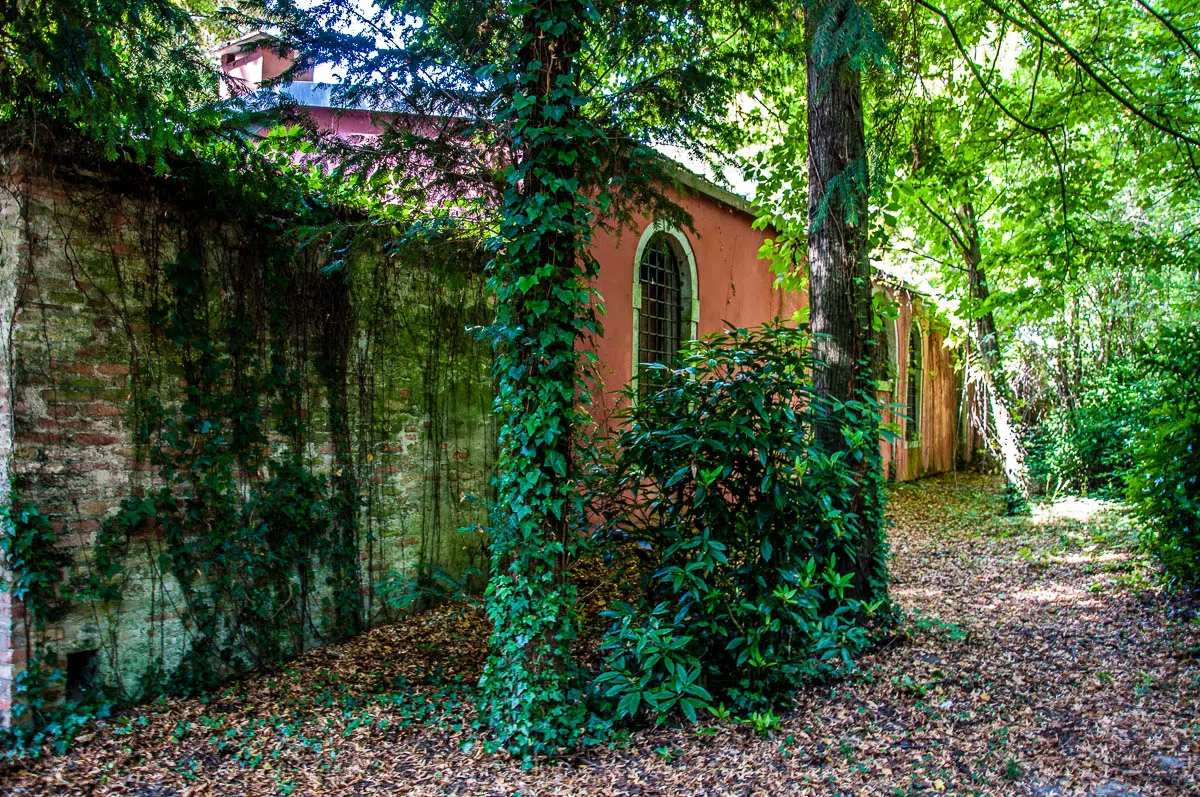
- English Arboretum – on the western side of the garden of Villa Pisani you will come across a small forested area. This was added during the days of the Napoleonic rule of Northern Italy. The arboretum is a nice place offering some much-needed shade during the hot days of summer.
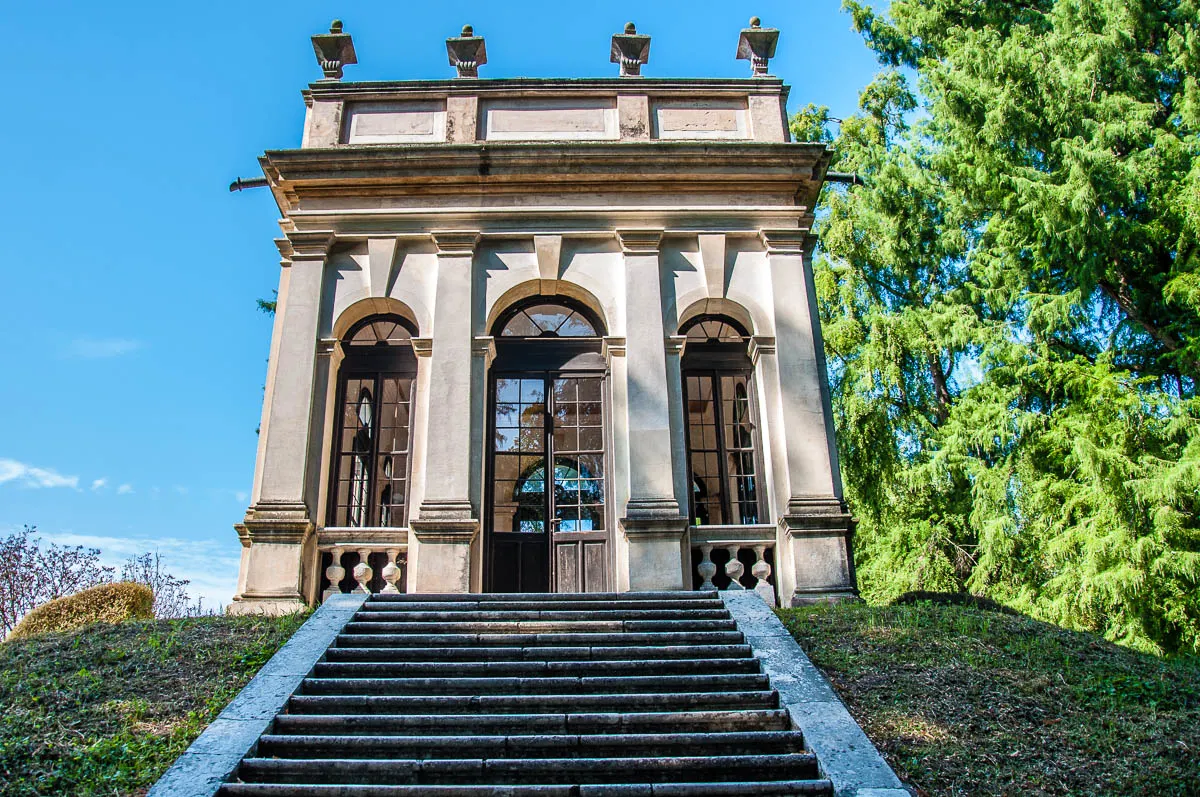
- Coffee House and Ice House – the coffee house is an elegant pavilion built on top of a small artificial hill. Steep stairs lead from the bottom of the hill all the way up. Villa Pisani’s owners and their guests would take refreshments in the coffee house during their daily walks in the garden. Curiously enough, the hill on which it stands, is surrounded by a moat. In winter, the water in the moat would freeze, and then the ice would be cut in blocks. These would be stored in an ice house built inside the hill. The ice will be used in summer to cool food and drinks. In the centre of the floor of the coffee house there is a vent letting through the cold air from the ice house below. Quite an ingenious air conditioning system, don’t you think!
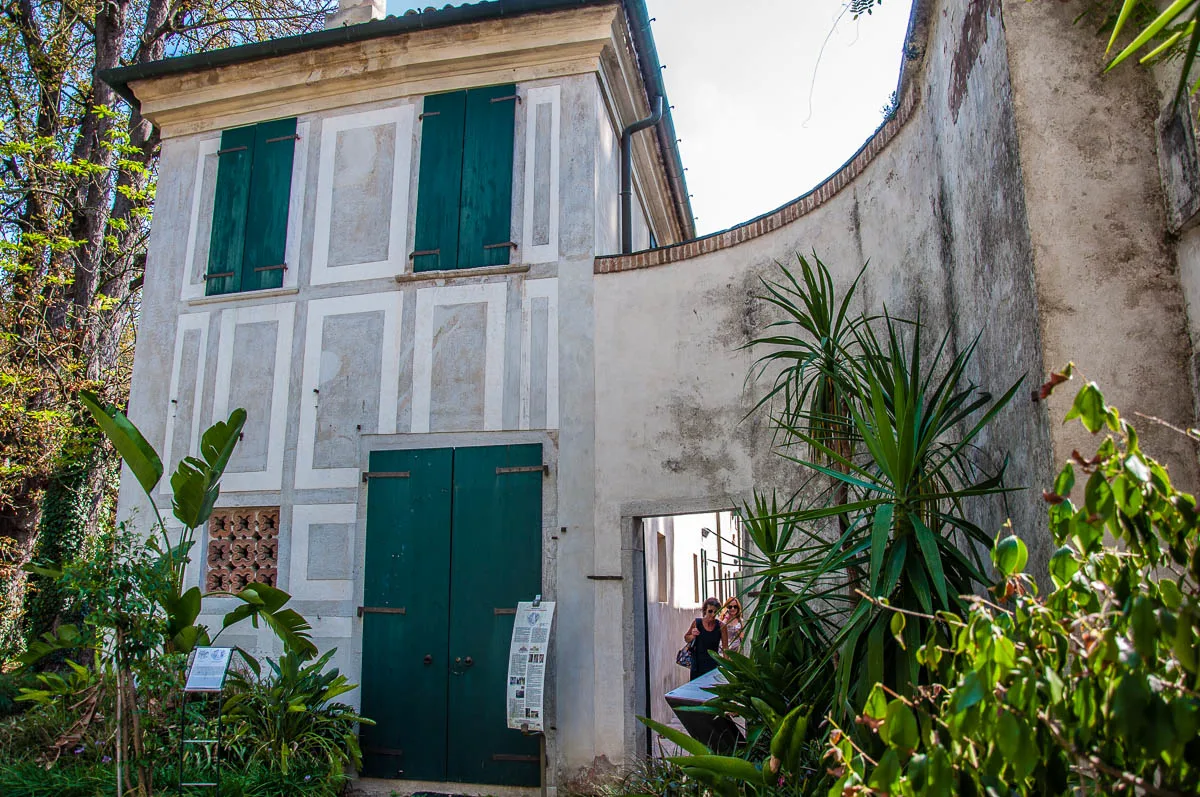
- Gardeners’ House – this is an interesting house where the people maintaining the huge garden used to live. Nowadays, on the ground floor you can see some of the gardening tools that had been employed there through the years.
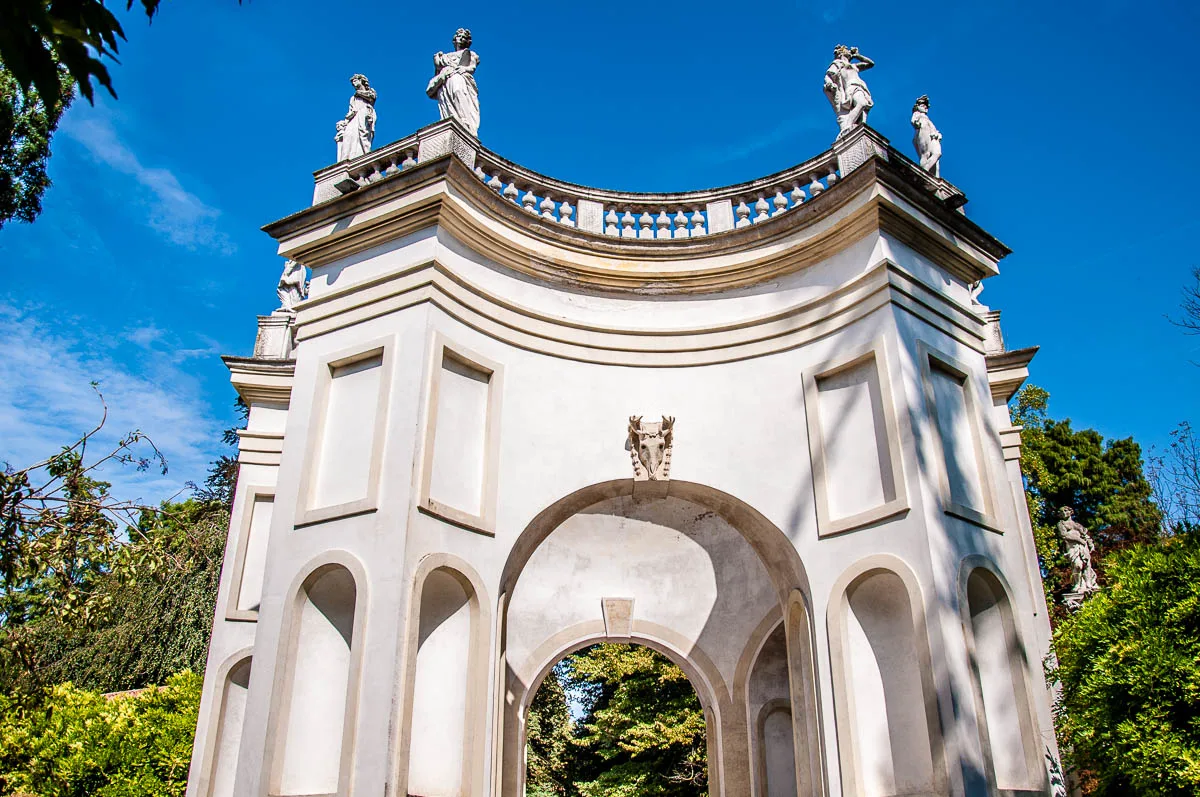
- Exedra – I have to admit, that I had never heard the term ‘exedra’ prior to my first visit to Villa Pisani. This rather refined word turned out to mean an elegant structure that looked like the love child of an arcade and a gazebo. You will find the exedra at Villa Pisani right next to the wisteria tunnels. The exedra is hexagonal in shape and it has a spiral staircase. This takes you to a circular platform affording some lovely views. Six paths lead from the exedra to some of the most notable sights in the garden.
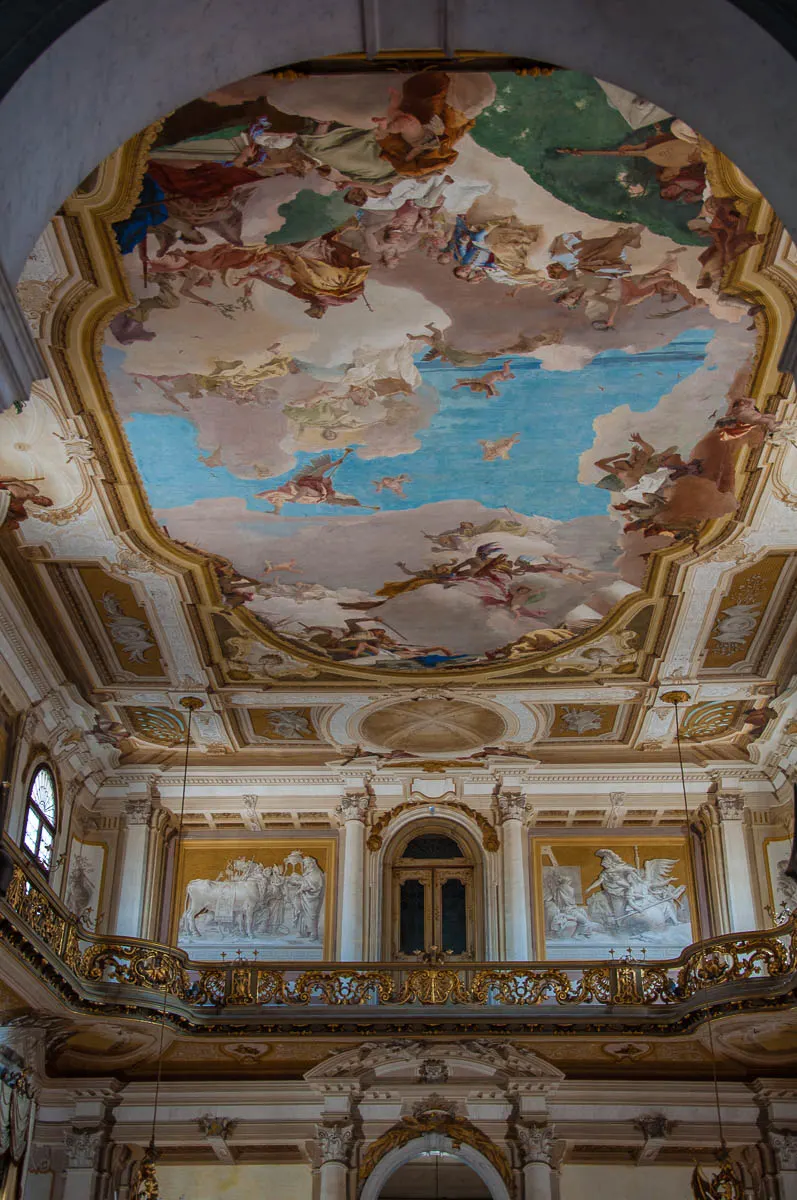
You can easily spend a whole day exploring the beautiful park and the many lavishly decorated rooms of the Villa Pisani. It’s a wonderful place to see in the Veneto and it is a sight that is intrinsically connected to this corner of Italy.
How to Reach the Park: The best way to reach Villa Pisani is by car or by public transport. There is a spacious car park just a few steps away from the villa’s monumental entrance. Approximate driving times are as follows: Padua – 22 mins, Venice – 33 mins, Vicenza – 40 mins, and Verona – 1 h 10 mins. Alternatively, you can get a train to Padua, then a bus to the town of Stra, and walk a few minutes to the villa’s entrance. Click here to see the Valsanzibio Garden on Google Maps.
Official Website: Museo Nazionale Villa Pisani
Opening Months: Open all throughout the year with reduced opening times in winter. On Mondays, the villa and the park are usually closed. To avoid disappointment, please, contact the park in advance to make sure that it will be open on the day of your visit.
My Favourite Corner: I love the Belvedere Terrace. It’s splendid and I can imagine the Venetian ladies of the past relaxing there while lightening their hair in the sun.
More Information:
3. Parco Giardino Sigurta’, Valeggio sul Mincio, Province of Verona
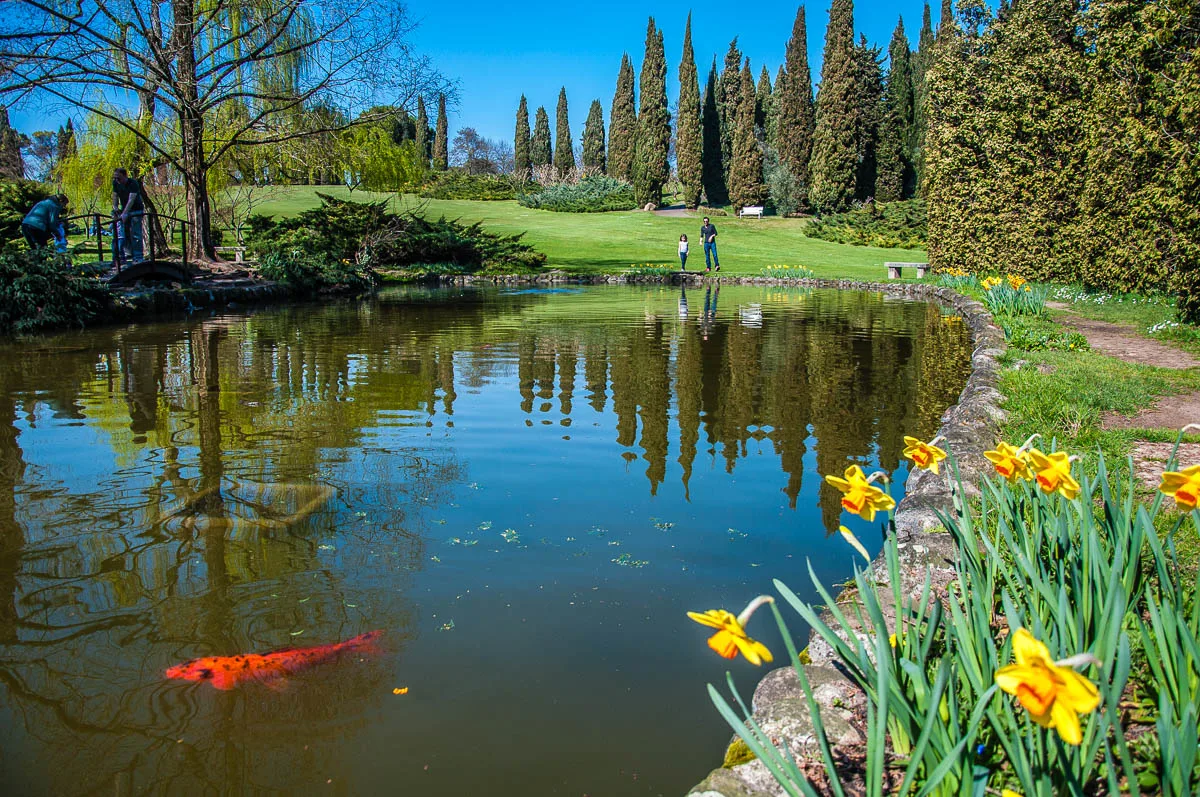
Parco Giardino Sigurta’ is one of Italy’s most important and most attractive parks. It’s enormous and splendid and it represents Italy’s best gardening practices and traditions. Hence, in 2013, it was selected as Italy’s Most Beautiful Private Park.
That’s not all though! In 2015, Parco Giardino Sigurta’ took second place at the European Garden Award. Plus, the park has won many awards for its amazing tulip displays.
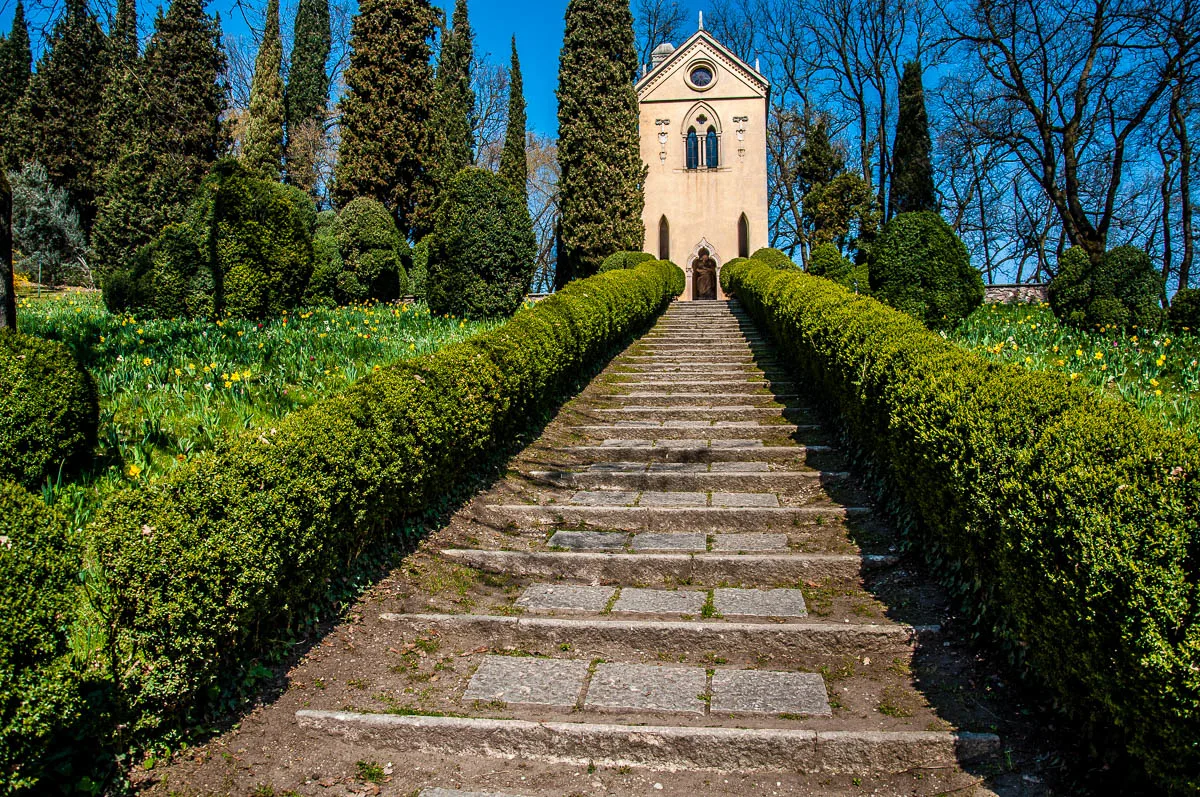
You will find Parco Giardino Sigurta’ in the small town of Valeggio sul Mincio which is close both to Verona and Italy’s largest lake – Lago di Garda. The history of the park spans several centuries and its area stretches over 600,000 sq. m.
Put at least half a day aside in order to be able to fully experience Parco Giardino Sigurta’ and its many corners. Bring a picnic if you want to take full advantage of the park’s wide green spaces.
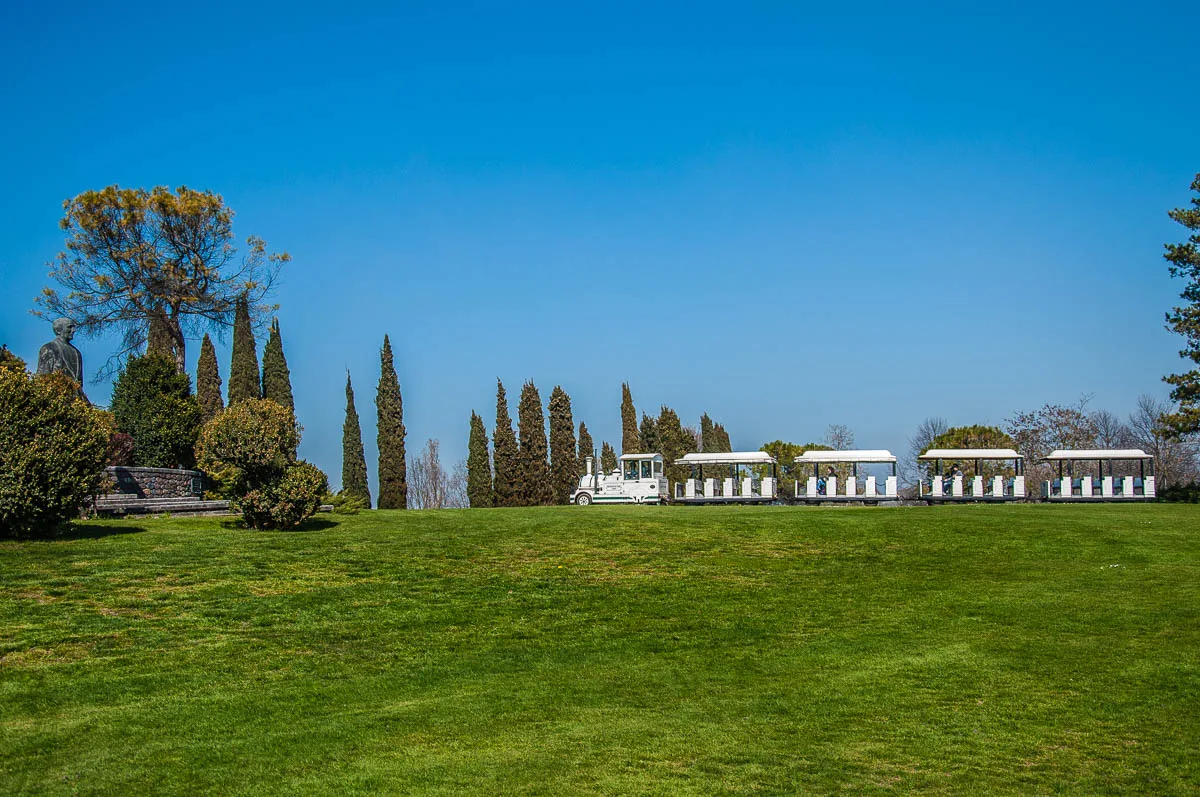
If walking long distances is not for you, there are golf carts that can be rented by the hour as well as an electric train circumnavigating the park.
There are many things to be seen and enjoyed in the park. Here are some of the highlights:
- Flowerings – seasonal events when the park’s tulips, daffodils, irises, roses and so many other flowers open their fragrant buds in spectacular displays. The tulip flowering is especially famous and Parco Giardino Sigurta’ has over one million tulip bulbs which flower every spring. It’s Italy’s most important tulip flowering and it’s accompanied by hundreds of daffodils and hyacinths, too.
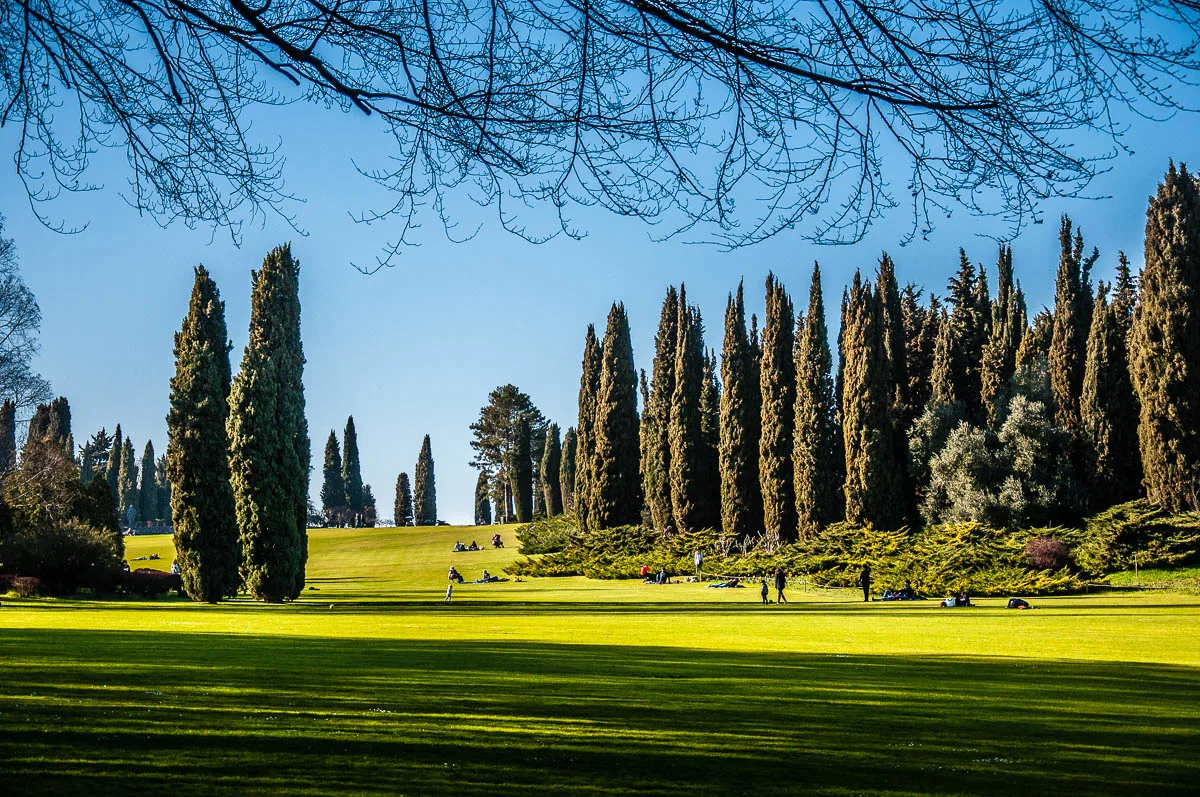
- Great Lawn – a huge carpet of soft lush grass. An excellent place to have a picnic and relax underneath the warm Italian sun.
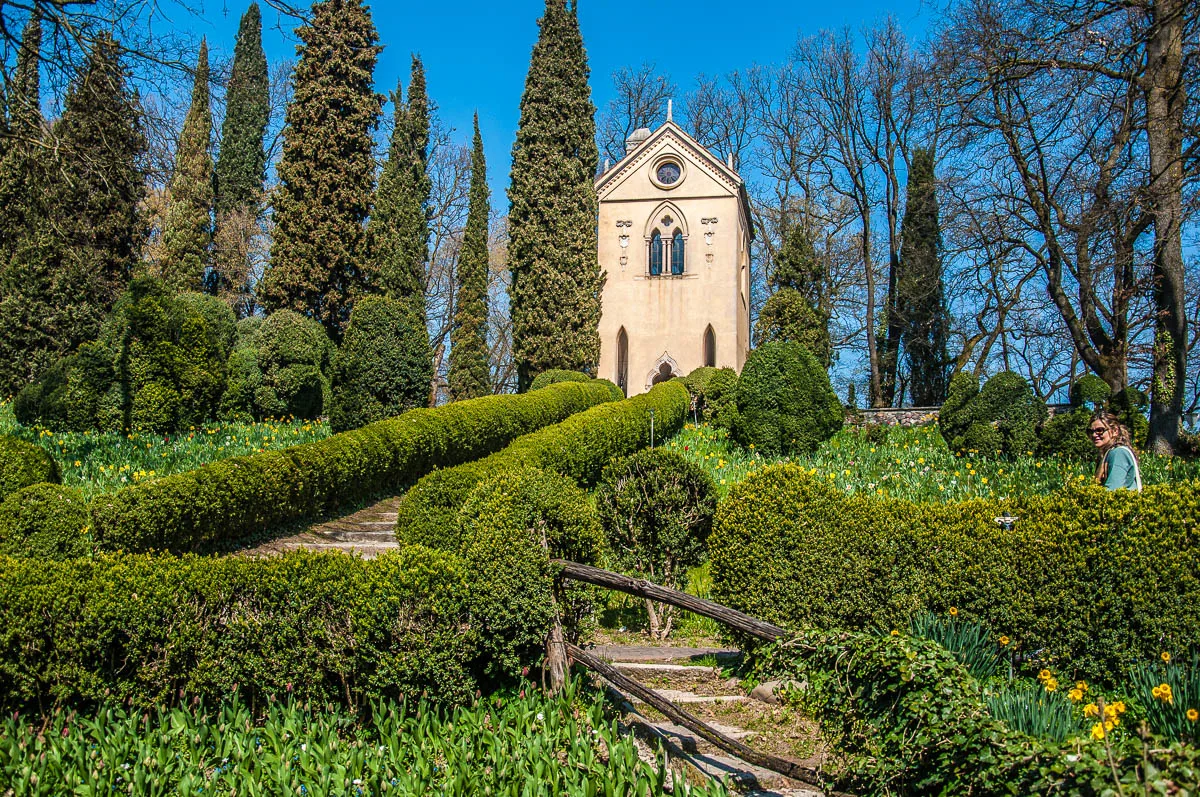
- Hermitage – Built in 1792, it looks particularly lovely in spring when it is surrounded by a blanket of daffodils in full bloom.
- Ponds – inhabited by colourful Japanese koi carps and dotted with stunning water lilies and water hibiscus in several colours.
- Rose Avenue – with 30,000 rose shrubs and the stunning Scaliger Castle at its backdrop, it’s an absolute pleasure to come for a fragrant stroll on this one kilometre-long avenue. For maximum effect, make sure that you visit Parco Giardino Sigurta’ in May when the roses are in full bloom.
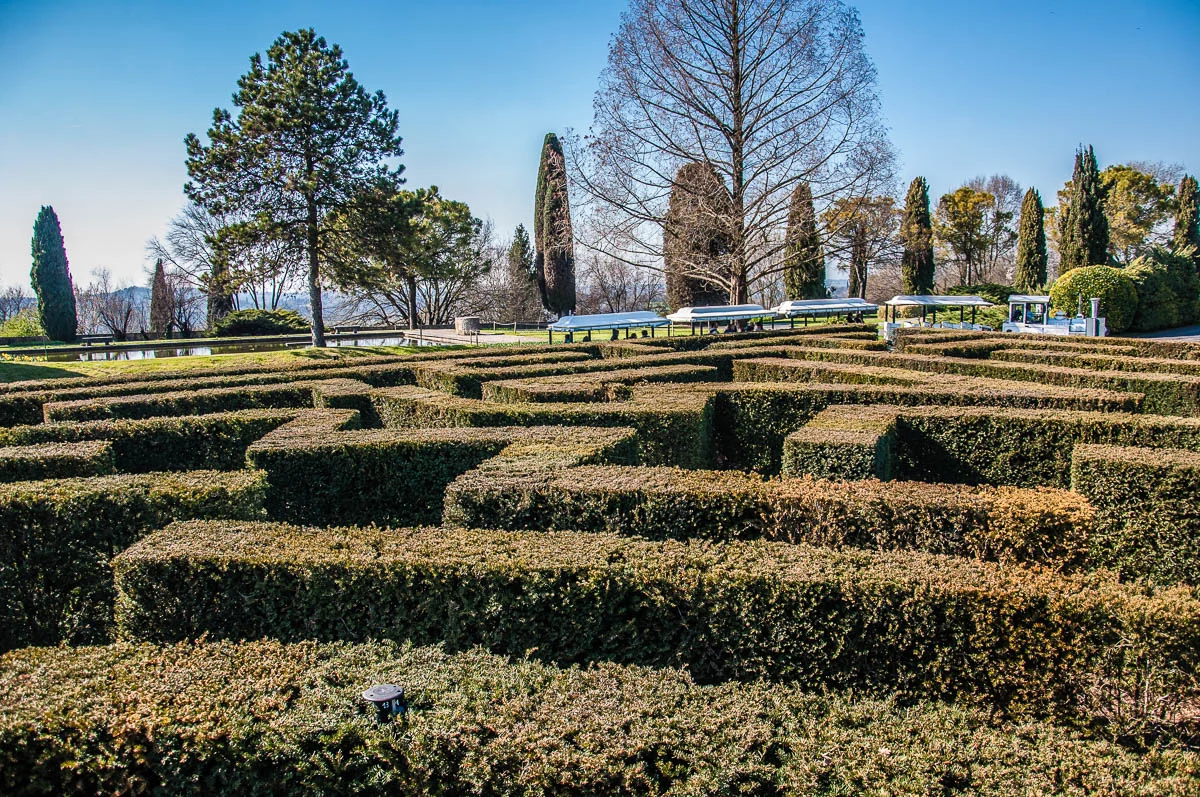
- Maze – a splendid labyrinth where the goal is to reach a tower at its centre inspired by the tower in the park of Bois de Boulogne in Paris. The maze’s hedges are made of 1,500 yew trees. The walls of the maze reach two metres of height.
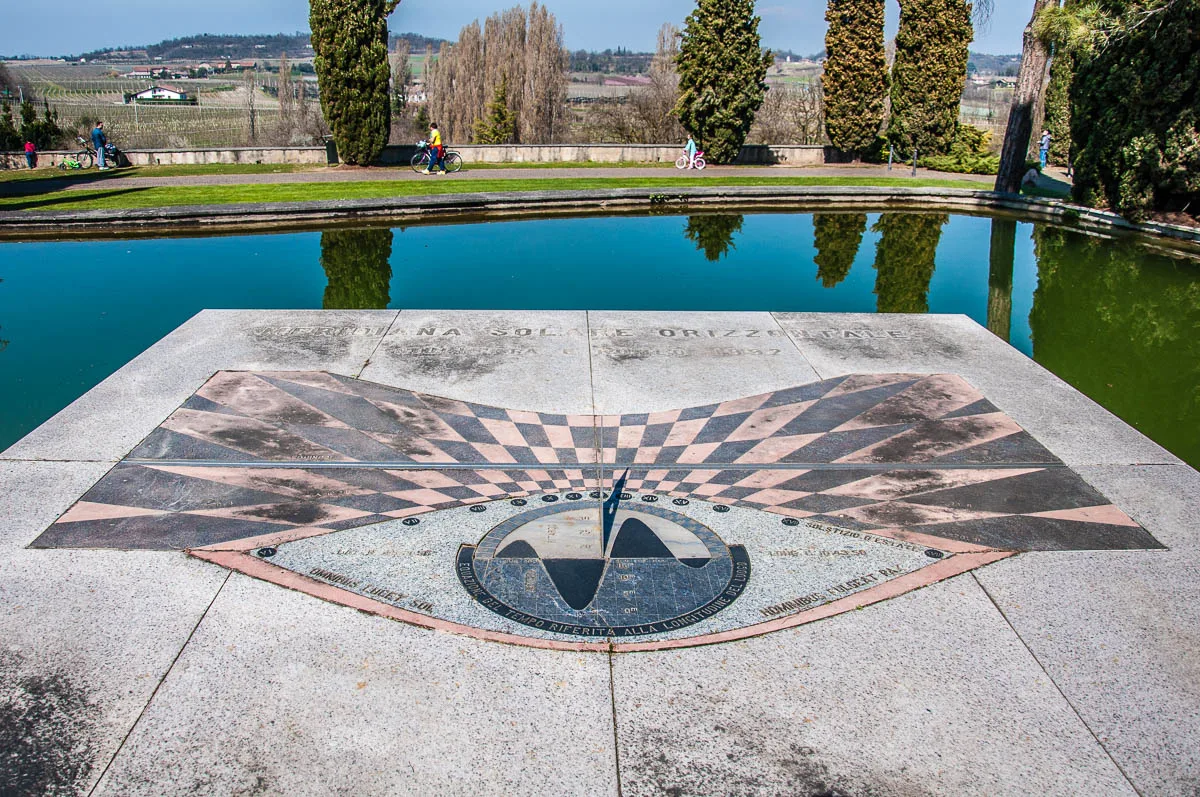
- Romeo and Juliet Sundial – a symbolic representation of Sun as a source of life.
- Medicinal Herb Garden – a small patch where over 40 medicinal plants grow.
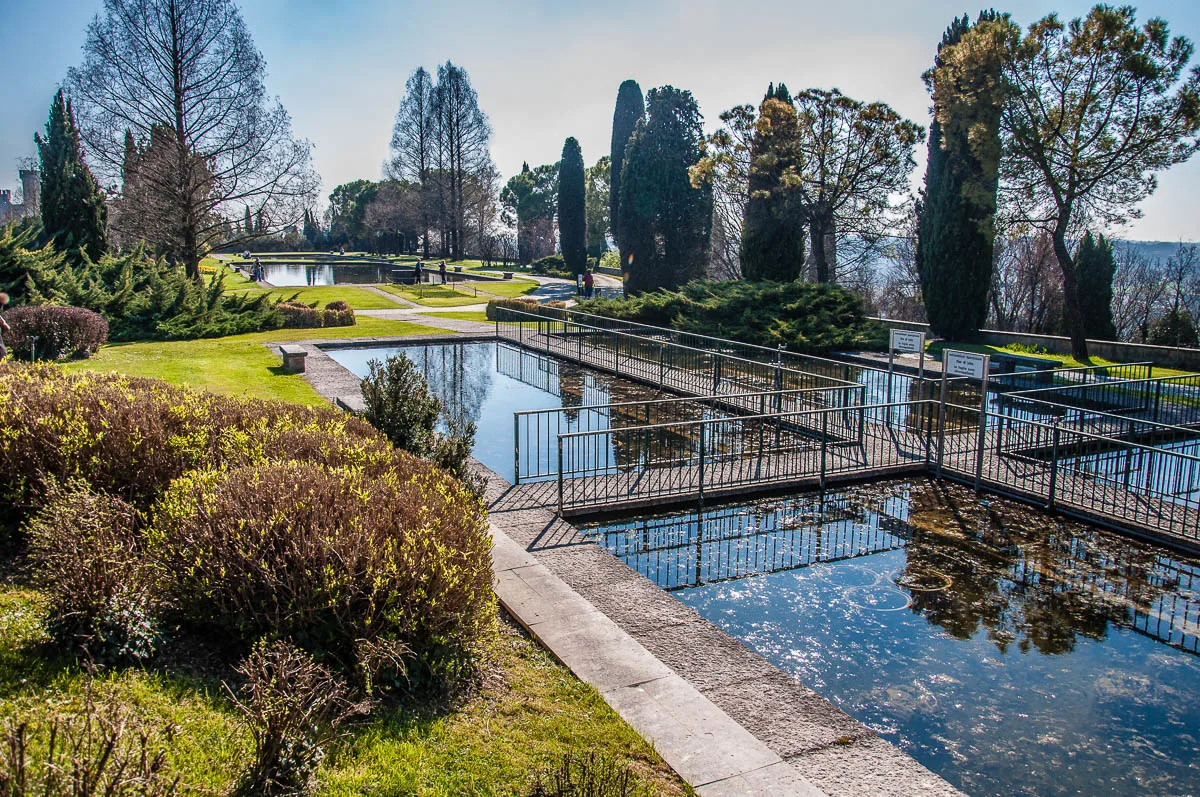
- Water Gardens – mirror-like water surfaces where water lilies and many other water plants grow.
- Great Oak – a 400-years old tree – the oldest in the park – with a trunk the circumference of which is six metres. Its crown has a perimeter of 120 m.
- Didactic Farm – it’s the place where children and adults can meet donkeys, chickens, goats, turkeys, and ducks.
Please, be aware that the medieval Scaliger Castle which can be seen in photos of Parco Giardino Sigurta’ is not part of the actual park. You will find the castle a couple of minutes away from the park and it can be visited free of charge.
How to Reach the Park: The best way to reach Parco Giardino Sigurta’ is by car or public transport. There is a spacious car park near the park’s entrance. Approximate driving times are as follows: Verona – 30 mins, Vicenza – 1 h, Padua – 1 h 15 mins, and Venice – 1 h 30 mins. Alternatively, you can get a train to Verona, then a bus to the town of Valeggio sul Mincio, and walk a few minutes to the park’s entrance. Click here to see Parco Giardino Sigurta’ on Google Maps.
Official Website: Parco Giardino Sigurta’
Opening Months: from March to November. To avoid disappointment, please, contact the park in advance to make sure that it will be open on the day of your visit.
My Favourite Corner: The tulip and daffodil displays.
4. Park of Villa Revedin Bolasco, Castelfranco Veneto, Province of Treviso
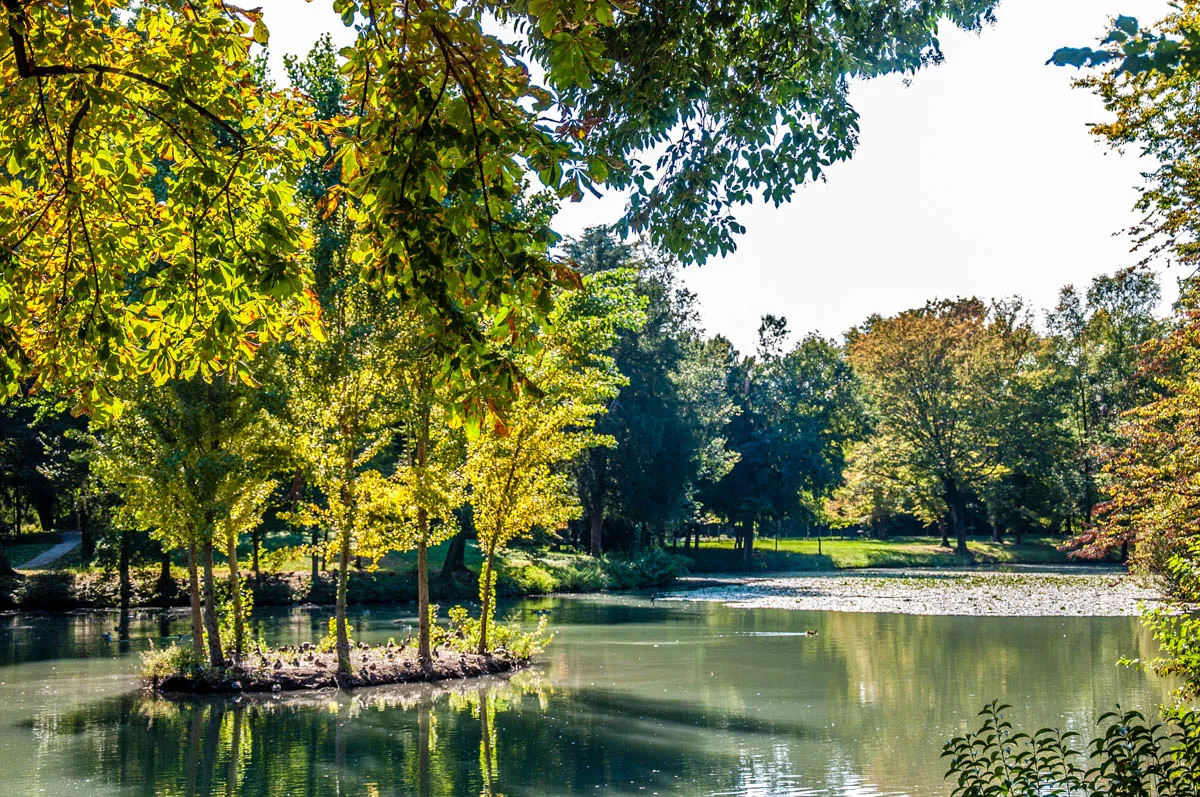
The park of the Villa Revedin Bolasco is a lovely 19th-century garden that was chosen as Italy’s most beautiful public park for the year 2018.
You will find it just off the historic centre of a medieval walled town called Castelfranco Veneto. Small but pretty as a picture, the town is in the Province of Treviso in the Veneto. It’s famous as the birthplace of the Renaissance painter Giorgione and it is a great place to visit on a day trip from the nearby tourist magnets of Venice, Padua, and Vicenza.
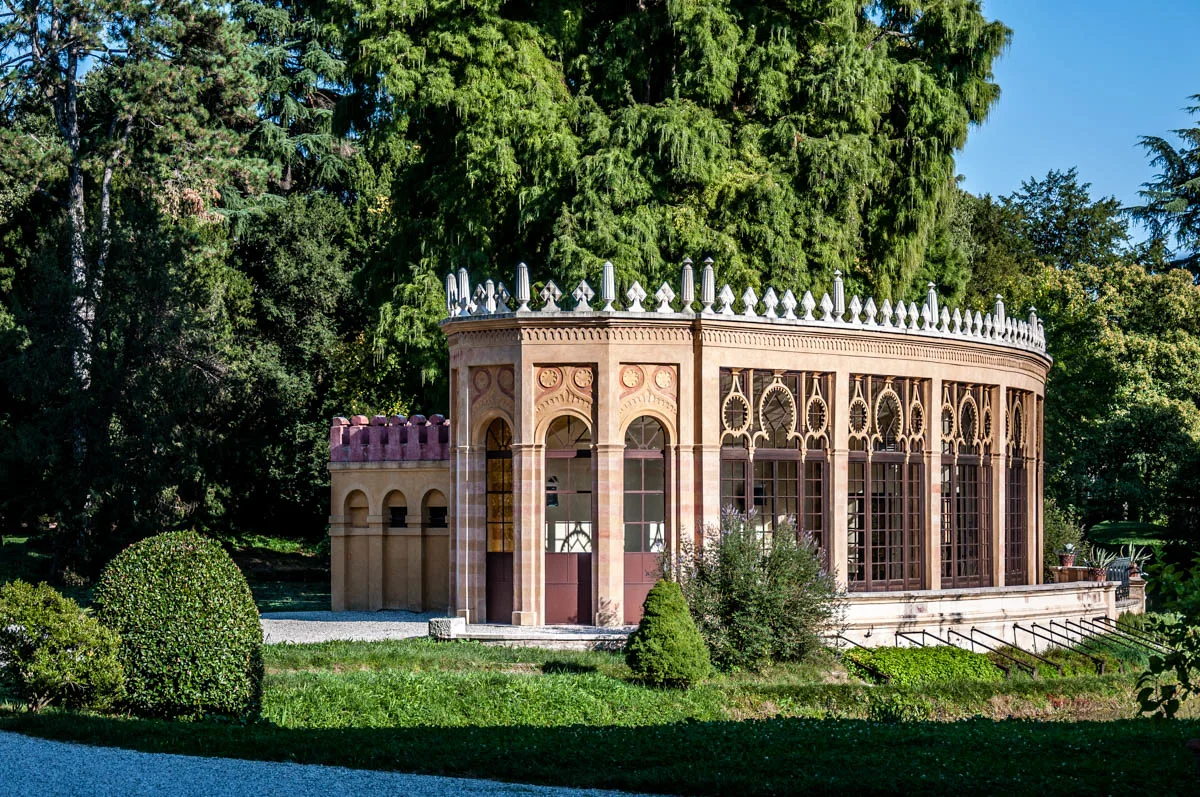
Should you find yourself in Castelfranco Veneto, please, make sure that you put an hour aside to visit the lovely park of the Villa Revedin Bolasco. With an area of 80,000 sq. m., it is quite a unique park in Italy as instead of following the traditions of the Giardino all’Italiana, it was landscaped according to the tenets of the English Garden.
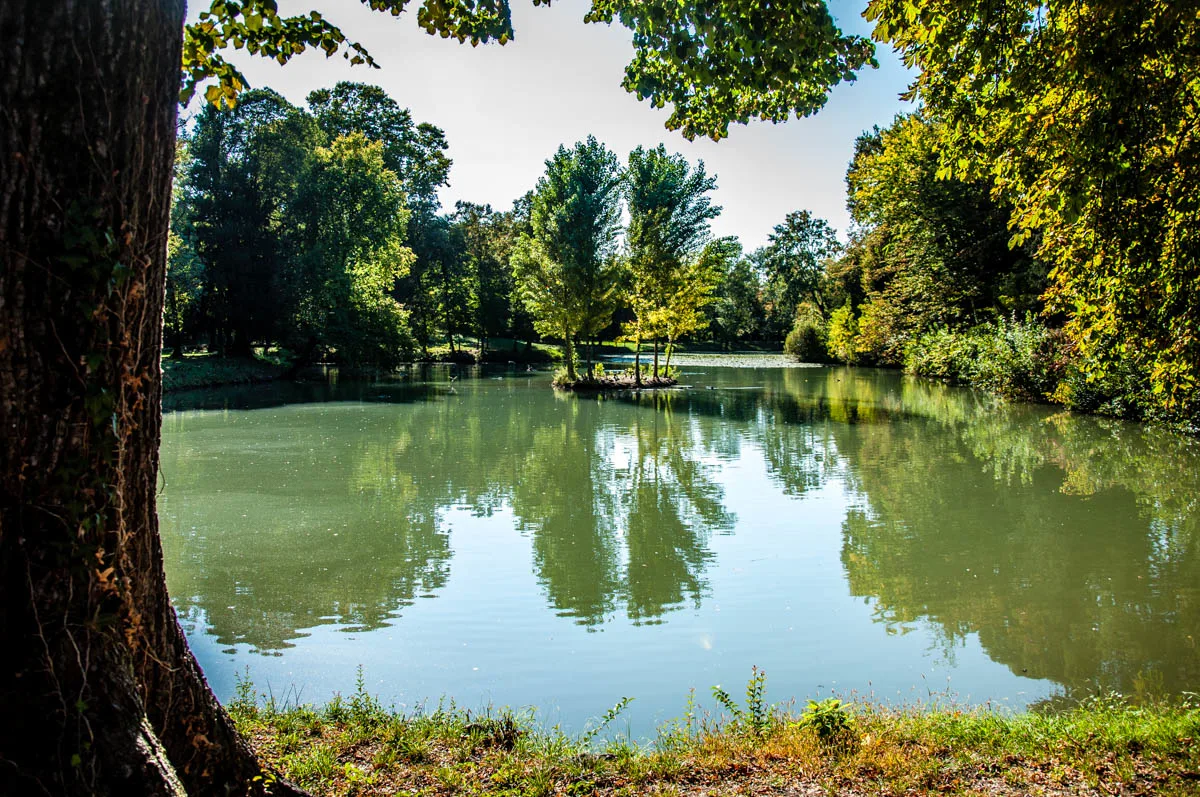
The main difference between an Italian Garden and an English Garden is that while the former aims to tame nature and introduce symmetry and order to it, the traditional English Garden seeks a more pastoral and romantic approach by enhancing nature instead of subordinating it.
And although the park of the Villa Revedin Bolasco in Castelfranco Veneto is hundreds of miles away from England, it is a great representation of the English Garden. Another curious thing about this park is that it was erected in the 19th century at the spot of a famous garden all’italiana. The first mayor of Castelfranco Veneto who had acquired the land completely rehauled the garden in 1866 and gave it its current look.

At present, the densely forested park has over 1,400 trees and shrubs belonging to 65 different varieties. The oldest specimens are over 140 years old.
Nowadays the park of Villa Revedin Bolasco is owned by the University of Padua and you can visit it as part of a guided tour. Here are some of the main features that will catch your eye there:
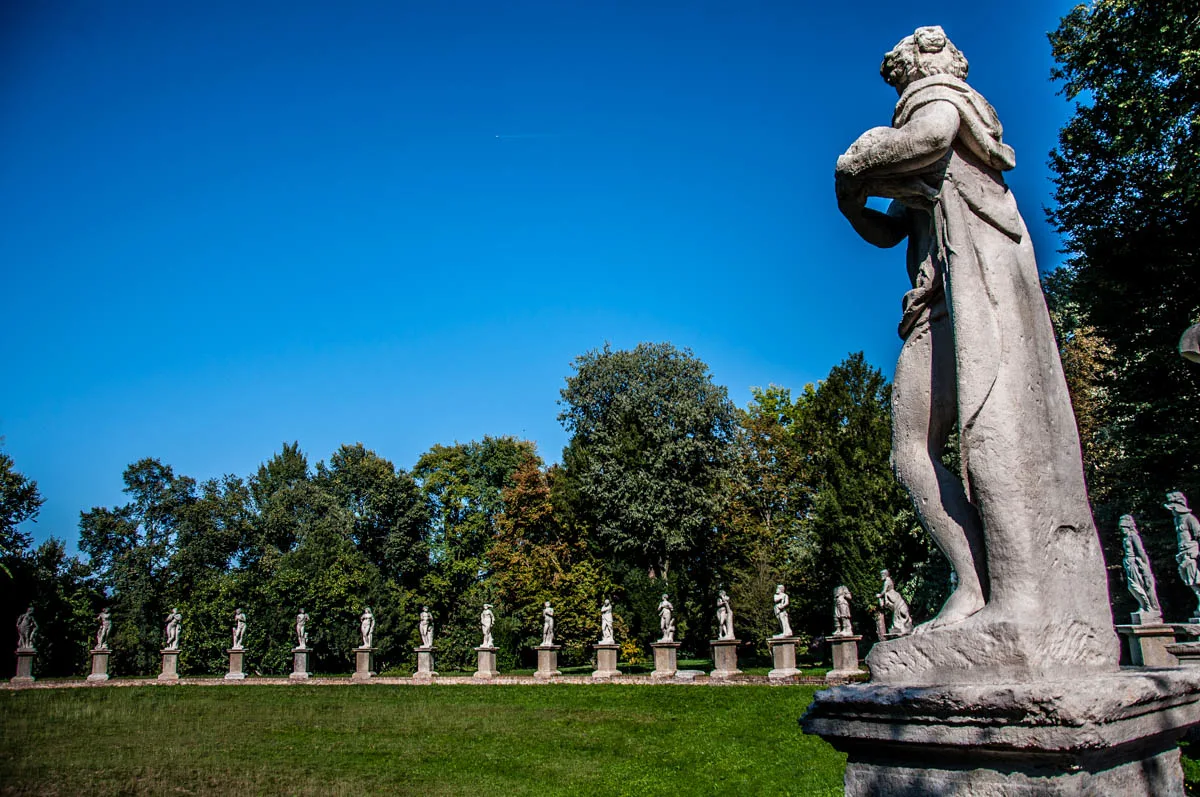
- Cavallerizza – a splendid amphitheatrical riding area surrounded by dozens of statues from the 17th century.
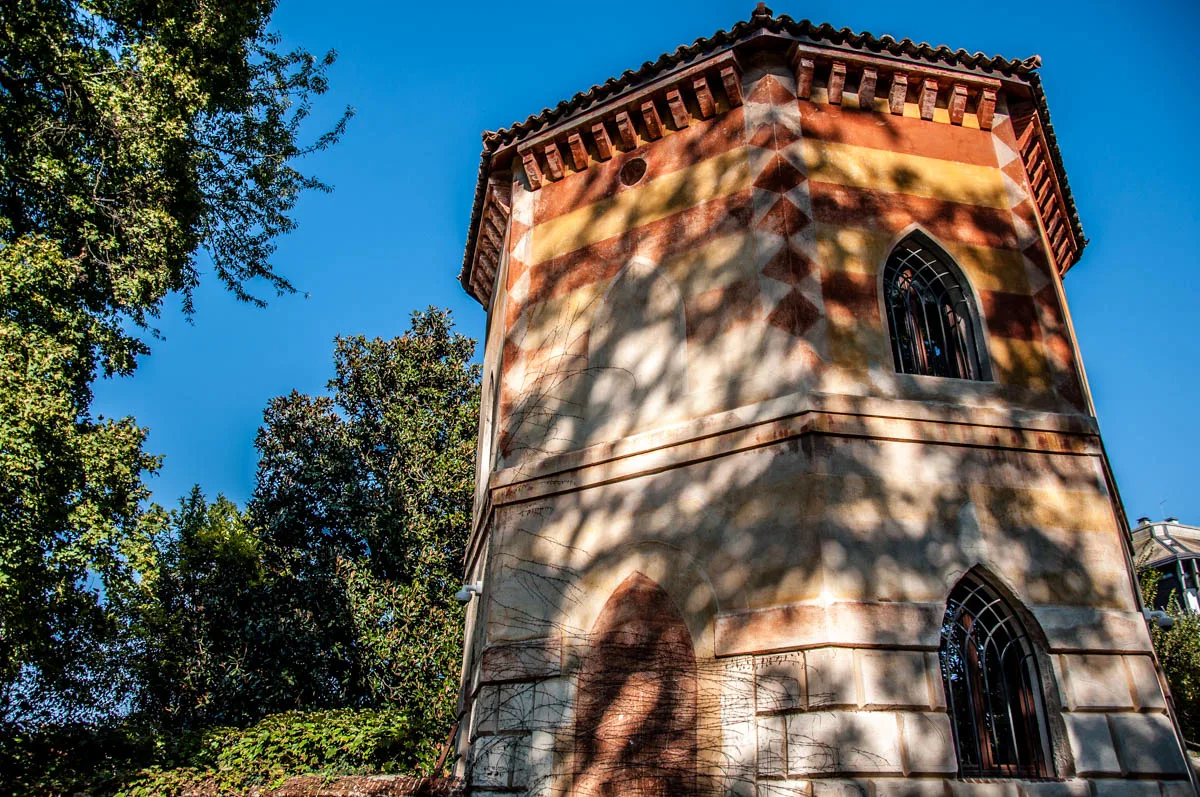
- Two Pigeon Towers – both are remnants of the famous Italian garden that existed at this place between the 16th and the 18th centuries.
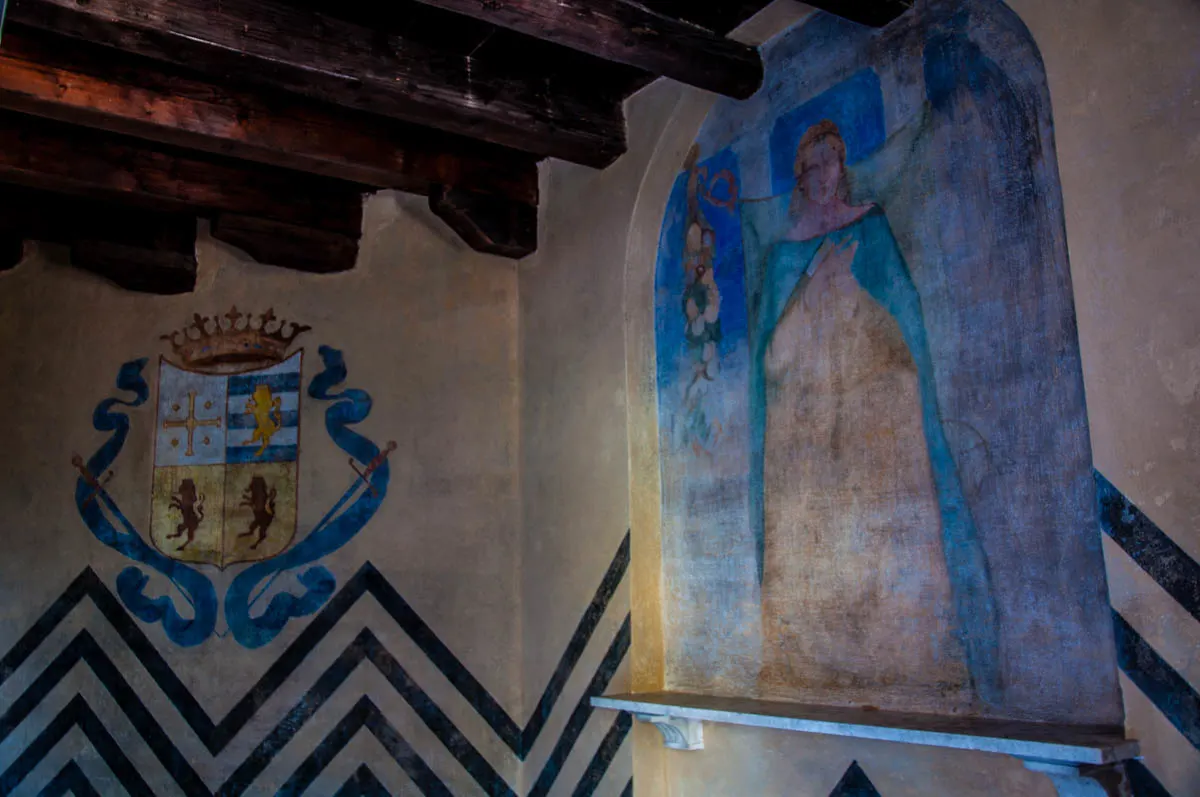
On the ground floor of the eastern pigeon tower there are preserved frescoes from that era.
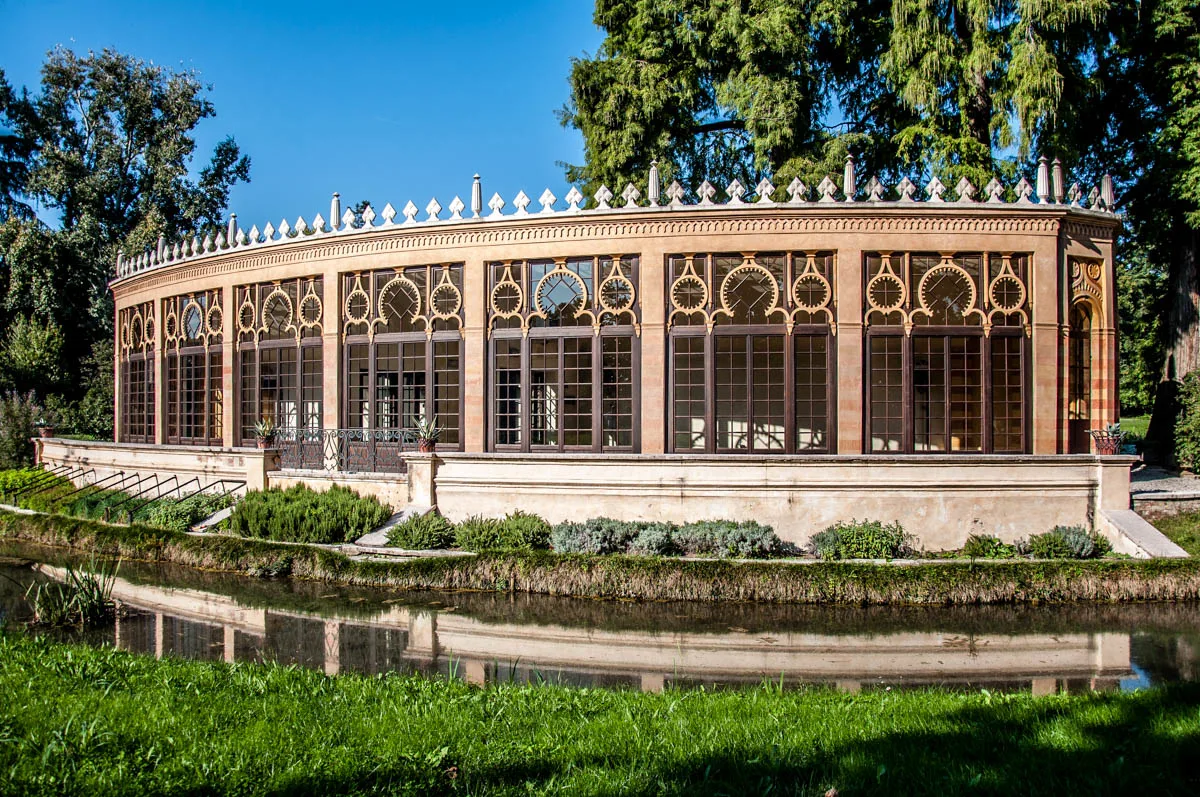
- Greenhouse – a very elegant building overlooking one of the large ponds. It was used to house flower pots and potted citrus trees during the cold months.
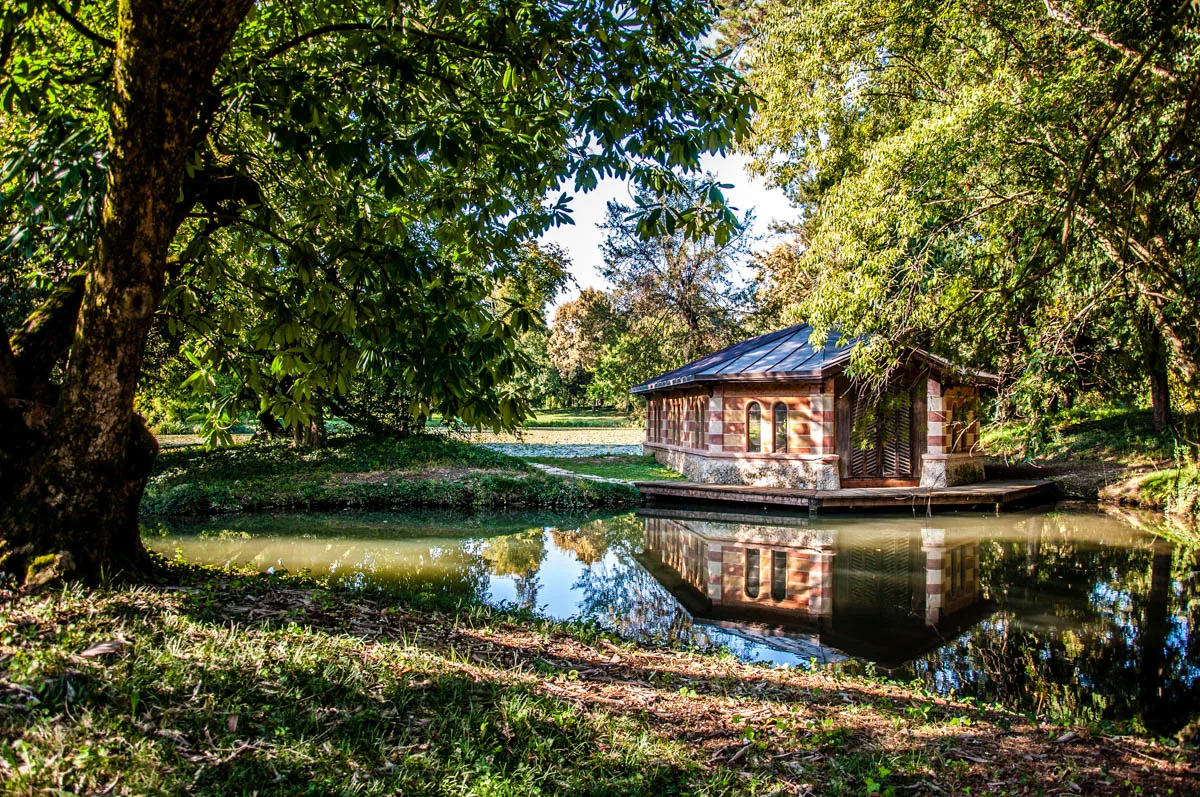
- Cavana – an elegant small house offering beautiful vistas over the park’s large pond.
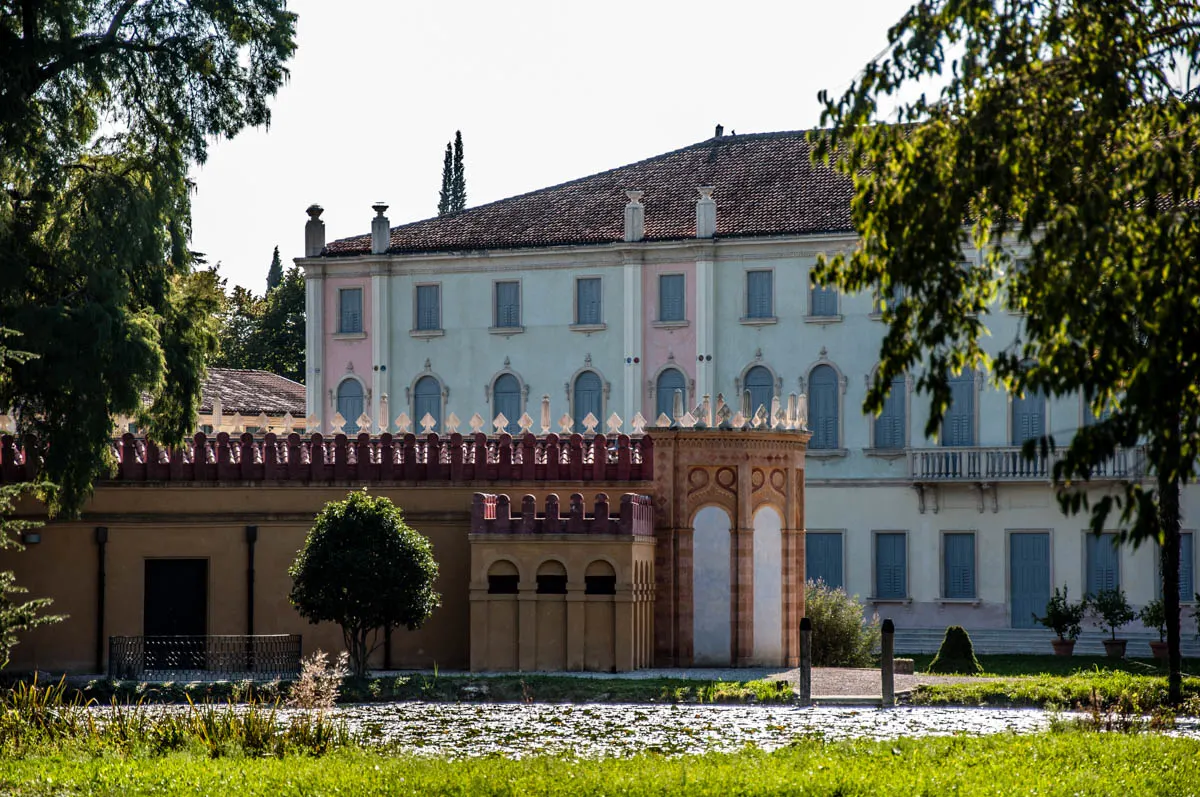
Please, be aware that the villa which is attached to the garden is not open for visits. You can admire its facade in the context of the park but you won’t have access to its interiors. If you look through the windows on the ground floor, you can glimpse some of the frescoes which adorn the walls of the villa’s grand salon.
How to Reach the Park: The best way to reach the park of the Villa Revedin Bolasco is by car or by public transport. Approximate driving times are as follows: Padua – 40 mins, Vicenza – 45 mins, Venice – 55 mins, and Verona – 1 h 20 mins. Alternatively, you can get a train to Castelfranco Veneto and then walk from the train station to the park’s entrance. The distance is just under a kilometre and a half and it takes less than 20 mins to get there. Click here to see the park of the Villa Revedin Bolasco on Google Maps.
Official Website: Park of the Villa Revedin Bolasco
Opening Months: From May to October. The park can only be visited as part of a guided visit and tours are usually held on weekends and festive days. It’s advisable to call in advance (please, see contact details on the park’s official website above) in order to book a place on a guided tour.
My Favourite Corner: Definitely the Cavallerizza. The citrus greenhouse is also beautiful.
In Conclusion:

The Veneto is a lush corner of Northern Italy where lavish parks, historic gardens, and green spaces abound all over its territory. Discovering the botanical richness and the gardening traditions of this Northern Italian region is a very enjoyable experience.
Such is the Veneto’s gardening excellence that in less than twenty years, four of its parks have been awarded the prestigious title of Italy’s Most Beautiful Park. These are:
- Giardino Storico di Valsanzibio in 2003 (the inaugural year of Italy’s Most Beautiful Park’s Award);
- Park of Villa Nazionale Pisani in 2008;
- Parco Giardino Sigurta’ in 2013; and
- Park of Villa Revedin Bolasco in 2018
The above blog post aims to introduce you to these four outstanding parks and gardens in the Veneto, Italy. With lots of photos and useful details, it gives you information on how and when to visit each one of them and what to see and enjoy there.
I hope that this blog post will give you some great ideas for places to discover for yourself in the Veneto.
More Helpful Links:
- 30 Days of Adventures in the Veneto, Italy – #30daysofadventures
- Top 15 Places to Visit in the Veneto, Italy – The Ultimate Guide
- 9 Gorgeous Parks and Gardens in the Veneto to Enjoy This Season
- Exploring Vicenza: The Hanging Gardens
- Padua’s Botanical Garden and the Basilica of Santa Giustina – A Great Contrast of Old and New
- Hidden Gems in Venice – 101 Things to Do in Venice, Italy Off the Beaten Track
- 20 Best Things to Do and See in Verona, Italy in One Day – The Ultimate Itinerary with Photos and Tips
- 25 Best Things to Do and See in Vicenza – Northern Italy’s Hidden Gem
- 10 Reasons to Stay in Padua during Your Italy Holidays
- 8 Most Beautiful Villages to Visit in the Veneto, Italy
- Italian Piazzas – 20 Most Beautiful Squares in the Veneto, Northern Italy
- Best 12 Towns to Visit Around Lago di Garda – Italy’s Largest Lake
- Lake Garda with Kids or 11 Best Things to Do at Lake Garda for Families
- Day Trips from Padua, Italy – Over 25 Unmissable Destinations in the Veneto, Lombardy and Emilia-Romagna
- Day Trips from Verona – 16 Destinations to Fall in Love With (With Travel Times and Train Tips)
- Day Trips from Vicenza, Italy – Over 90 of the Best Destinations
- 11 of the Best Day Trips from Venice (With Lots of Photos, Travel Times and Italy Train Tips)
Thank you for reading! Please, leave me a comment, pin the image below or use the buttons right at the top and at the end of this blog post to share it on social media.
For more useful information like this, please, like my blog’s page on Facebook and subscribe to my strictly no-spam newsletter.
